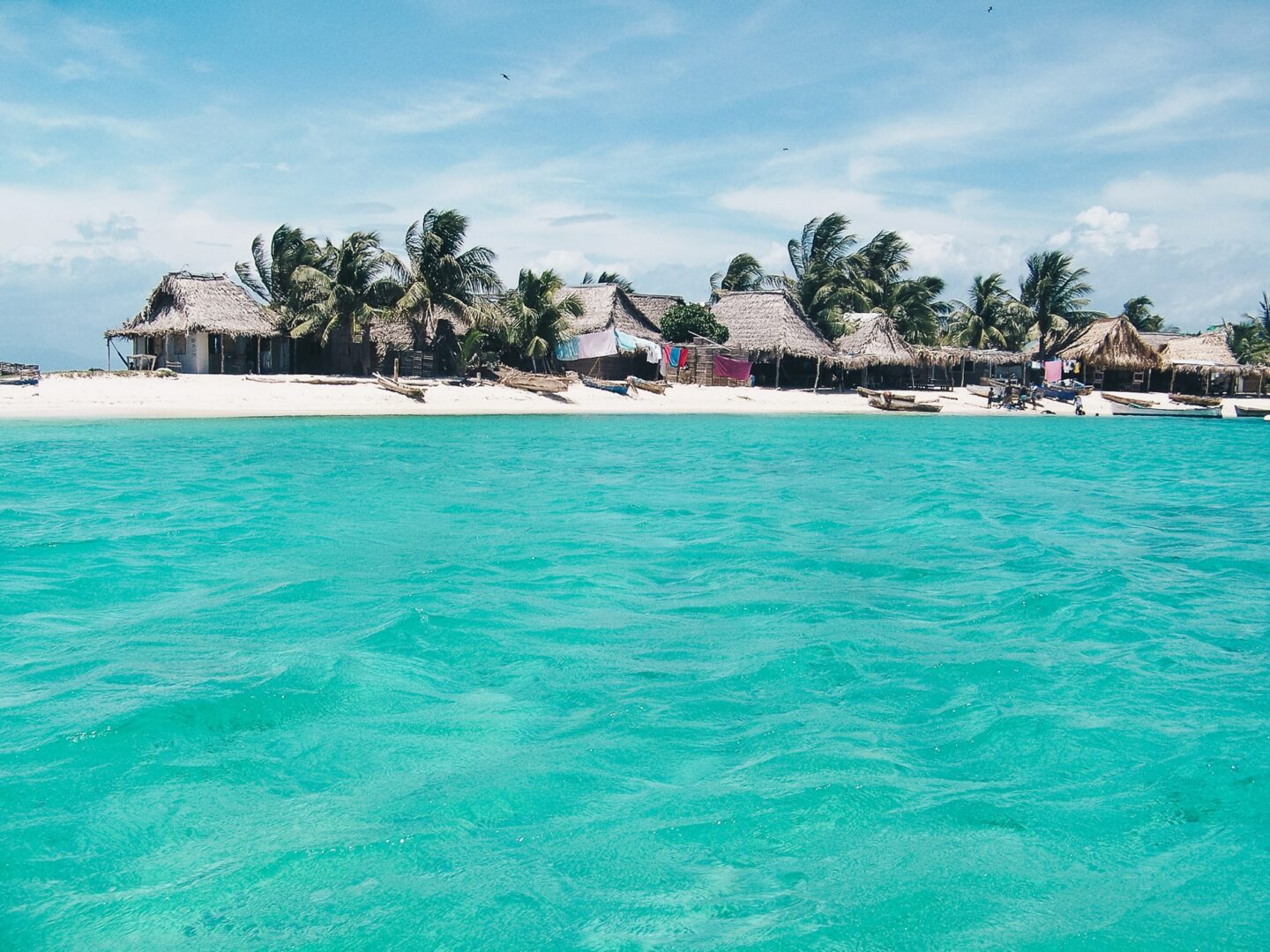
If you love snorkeling, diving and off-the-beaten-track destinations, then come and discover Honduras, a country with beautiful resources just waiting to be explored. Here’s a look back at our 17-day experience in this forgotten travel destination.
SOMMAIRE DE L'ARTICLE :
| PRESENTATION OF HONDURAS
Honduras is the second largest country in Central America after Nicaragua, but also one of the poorest on the continent. Bordered by Guatemala to the west, El Salvador to the south and Nicaragua to the east, it stretches between two seas: the Caribbean Sea to the north and the Pacific Ocean to the south. It’s a little-known destination, a forgotten country that’s sometimes even hard to find in travel catalogs, but for me it’s a real favorite in Central America!
In addition to its low mass tourism, Honduras enjoys a tropical climate, with temperatures ranging from 20°C to 40°C. The country also boasts an abundance of flora and fauna, and offers a wide variety of landscapes and activities. With 753 kilometers of Caribbean coastline, the islands of La Bahía (Utila, Roatan and Guanaja) in the Caribbean (2nd largest barrier reef in the world) offer some of the best and most inexpensive diving spots in Latin America. Tela and its often deserted white sandy beaches of Punta Sal are the perfect place to relax and unwind! The “Ruta Lenca and its mountains take you through coffee-growing areas, through unspoilt, traditional villages such as Triunfo de la Cruz, a small Garifuna village on the Bay of Tela. The Garifunas arrived in 1797 and have their own culture, which constitutes the country’s major cultural wealth, with their own dialect, gastronomy, music and rites derived from voodoo. A change of scenery guaranteed.
Numerous parks and nature reserves in the mountains, forests, by the sea and rivers, offer visitors a wide range of activity options: rafting 30 minutes from La Ceiba, mountain biking, horse riding, fishing, rafting, canoeing, trekking, zip-lining, etc.
But there’s more to Honduras than beautiful landscapes, as evidenced by its rich Mayan past, with the grandiose legacy of the Copán Ruins, its colonial heritage and the traditions of the ten ethnic groups present throughout the country.
Honduran cities aren’t particularly attractive and don’t hold much interest, but a jaunt to Comayagua and Trujillo northeast of the capital, lets you relax on beaches with crystal-clear waters and enjoy its delightful colonial quarter. The capital, Tegucigalpa, is pretty poor and pretty crappy. With the exception of the historic center, which is in the early stages of revitalization, there are few sites of interest.
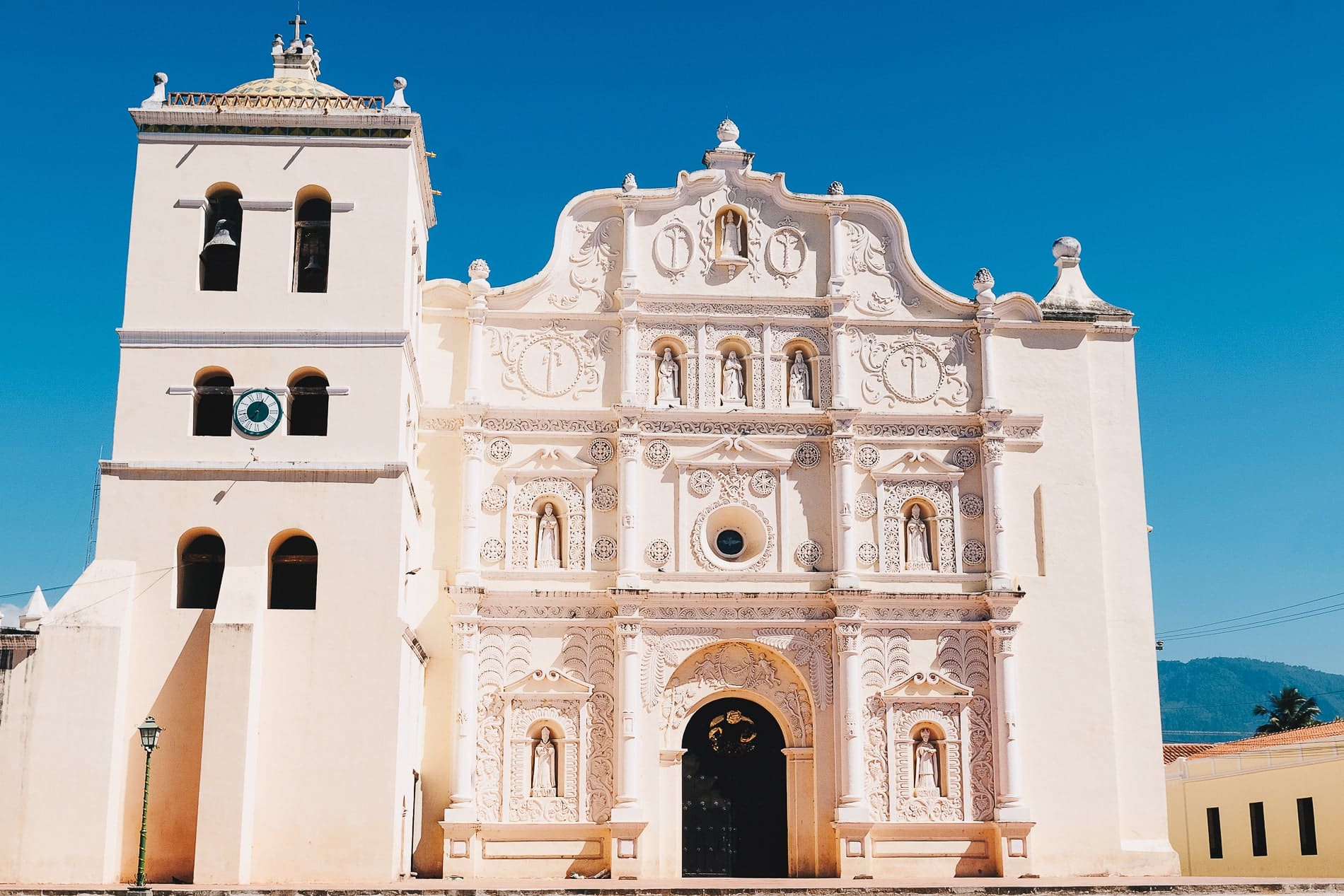
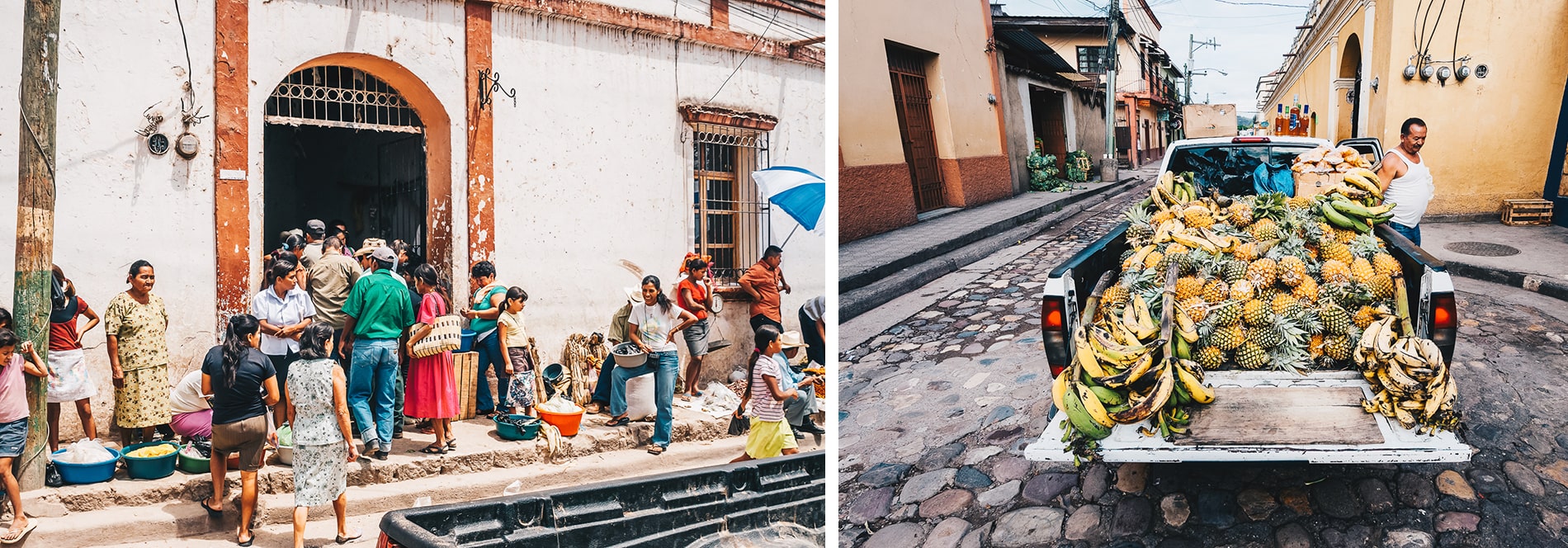
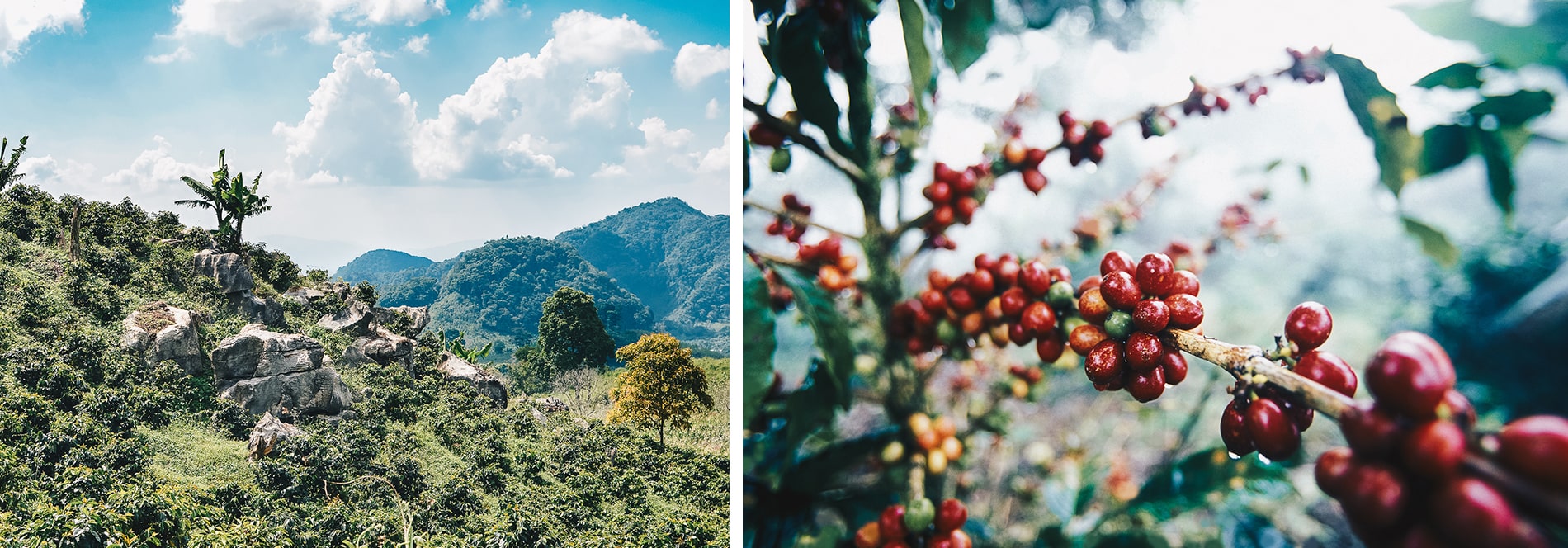
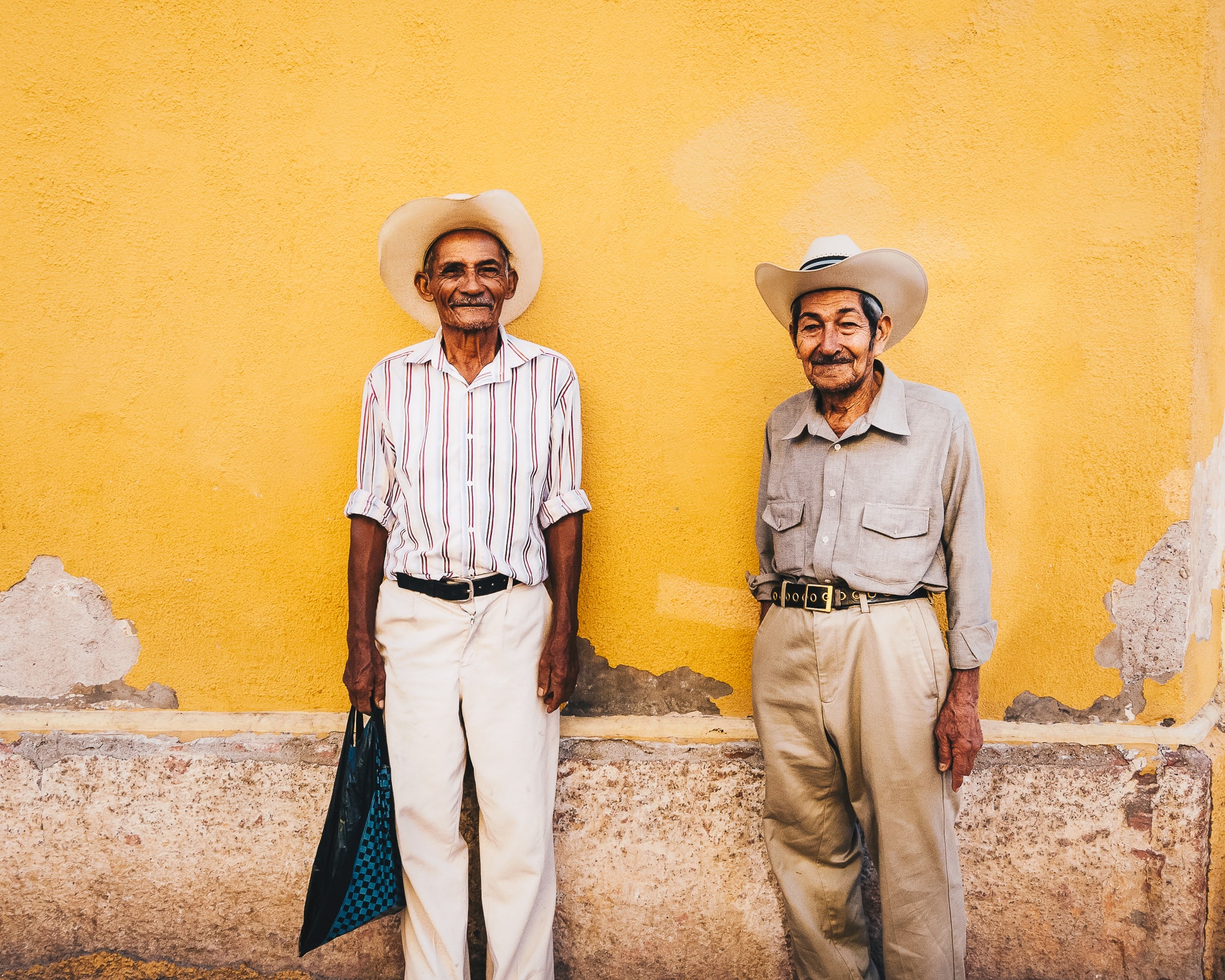
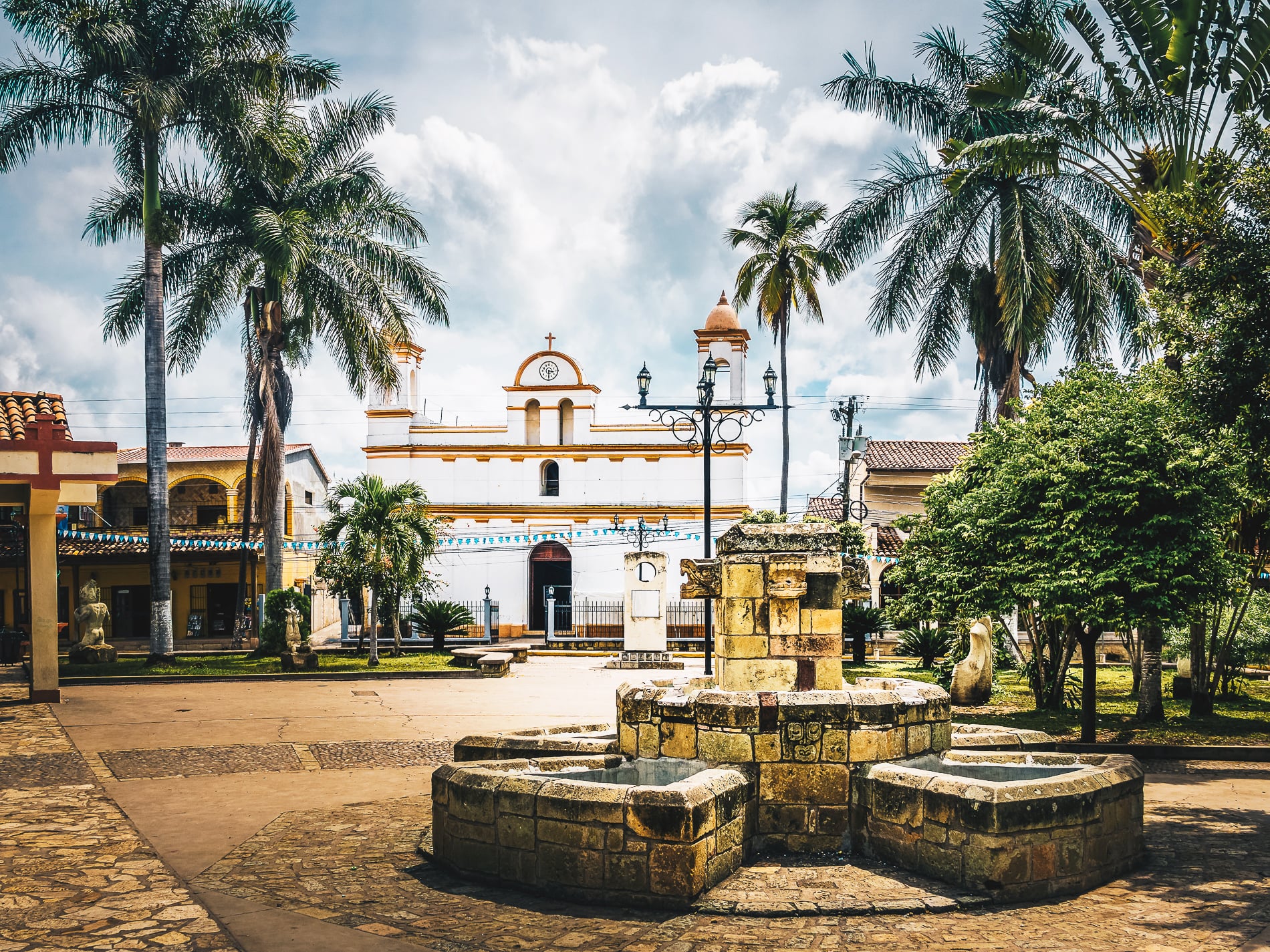
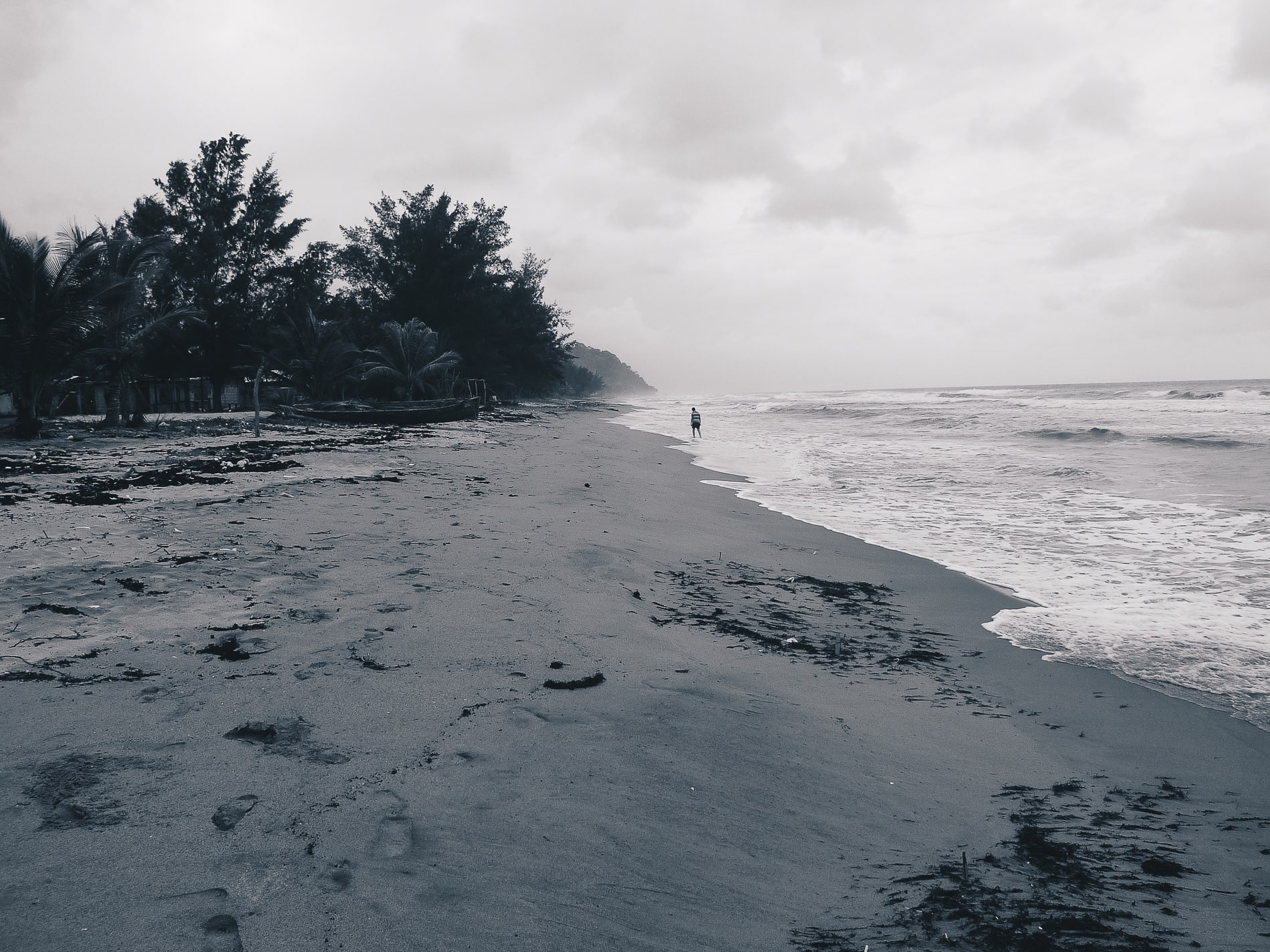
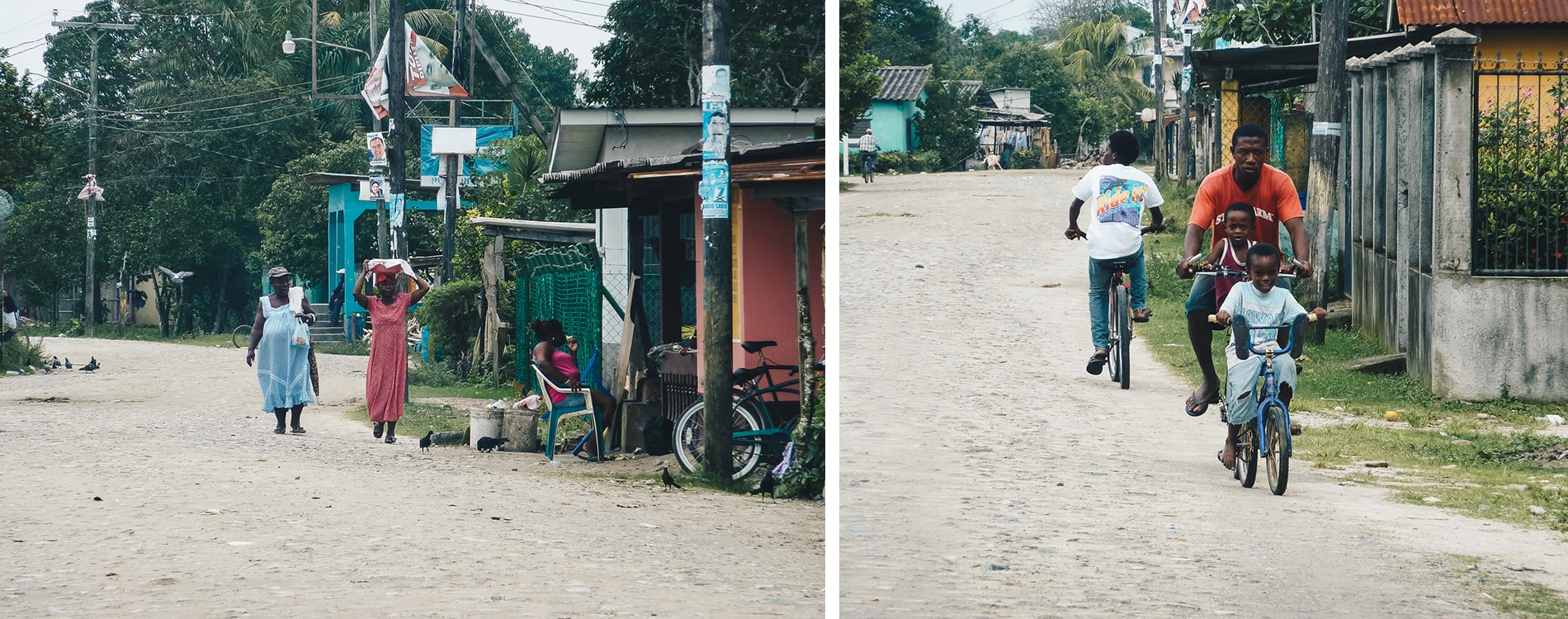
| THE COPÁN ARCHAEOLOGICAL SITE
Copán, just 12 kilometers from the Guatemalan border, is a lively, cobbled colonial village with a certain charm and pretty, colourful facades. You’ll enjoy strolling through the narrow streets and relaxing on a terrace with a cup of coffee. Indeed, the region’s climate is ideal for growing coffee, and there are numerous plantations in the surrounding area. People come to Copán mainly for its wild archaeological site, the ruins of Copán, a 10,000-year-old wonder of the Mayan world and a UNESCO World Heritage Site. It’s a must-see in the country, not only for its conservation and historical importance, but also for the beauty of the site, with its remains of stelae in the middle of the jungle. Although Copán is very beautiful and atypical, I preferred the Tikal site in Guatemala. However, I have very fond memories of it. It’s well worth a stop if you’re just passing through, as are the sites of Yarumela, Tenampua and Los Naranjos.
As with many Aztec, Mayan and Inca sites, I always advise you to visit in the early hours of the morning, when nature is asleep and slowly waking up, to enjoy the peace and quiet, avoid travelers and come face to face with the various mammals that inhabit the area and fly over these majestic sites (monkeys, scarlet macaws, iguanas…).
The site is open Monday to Sunday, 8am to 4pm. It takes at least a full day to visit the extensive Copán site. Admission costs around $15/p. You can visit the site on your own or with a guide.
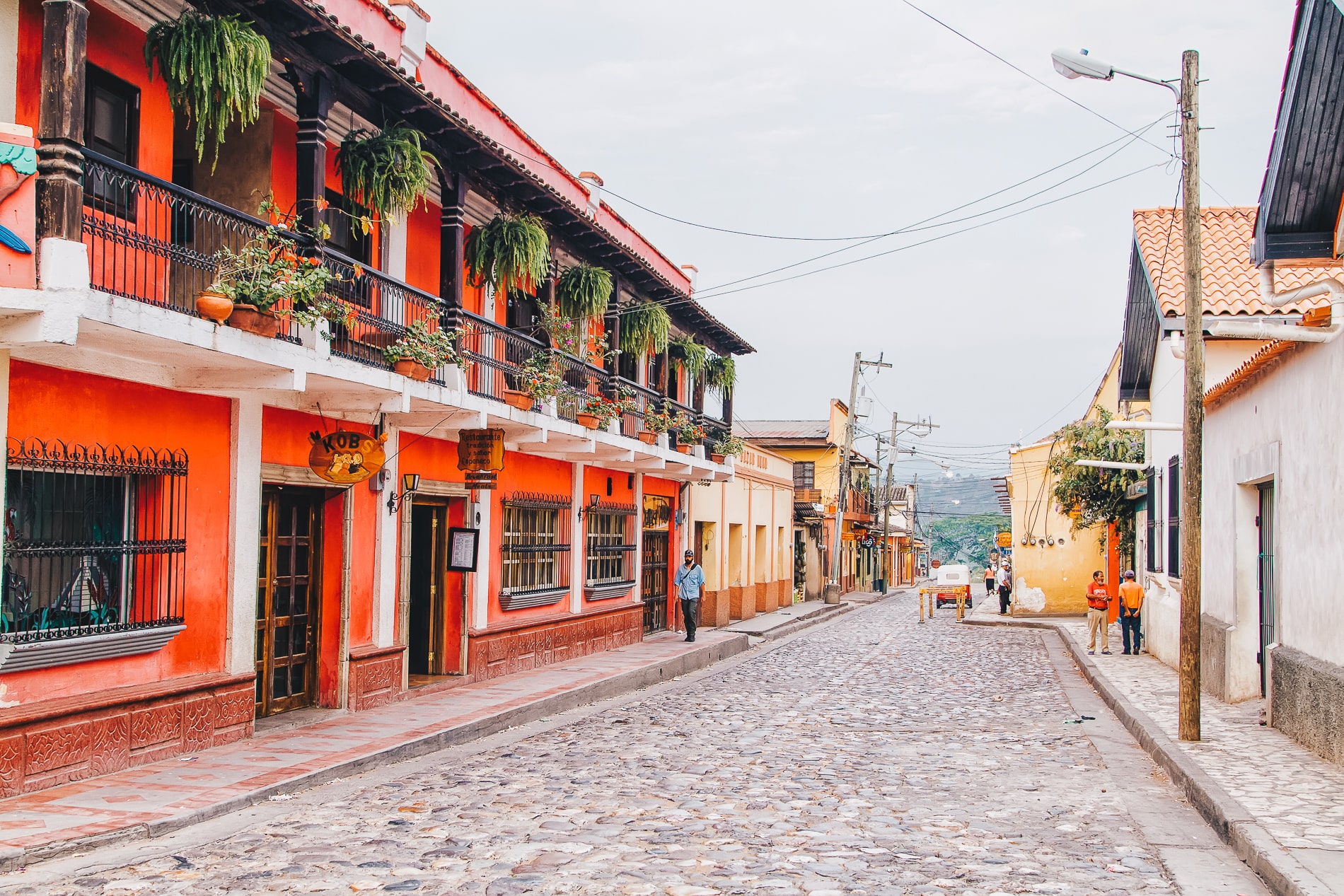
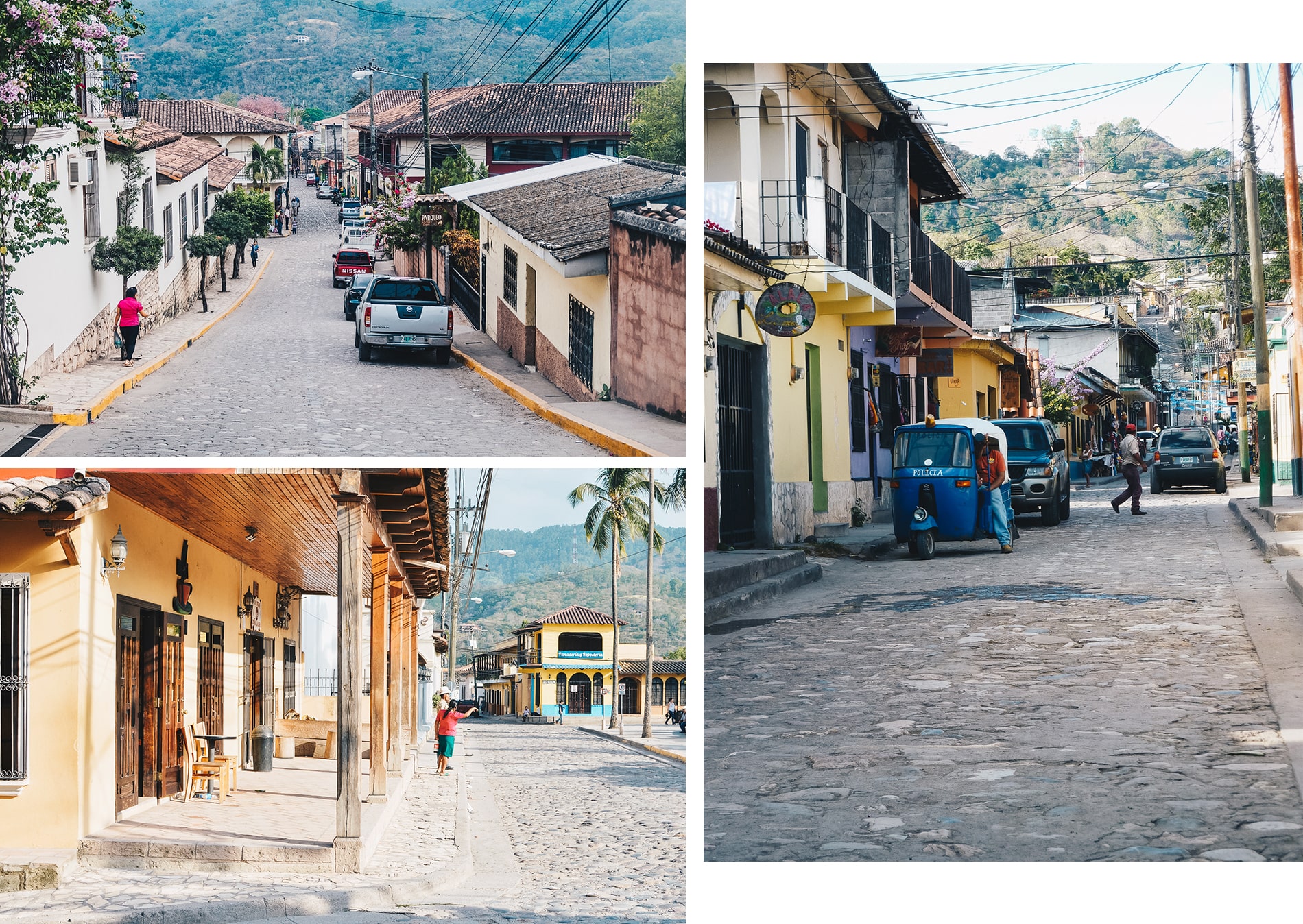
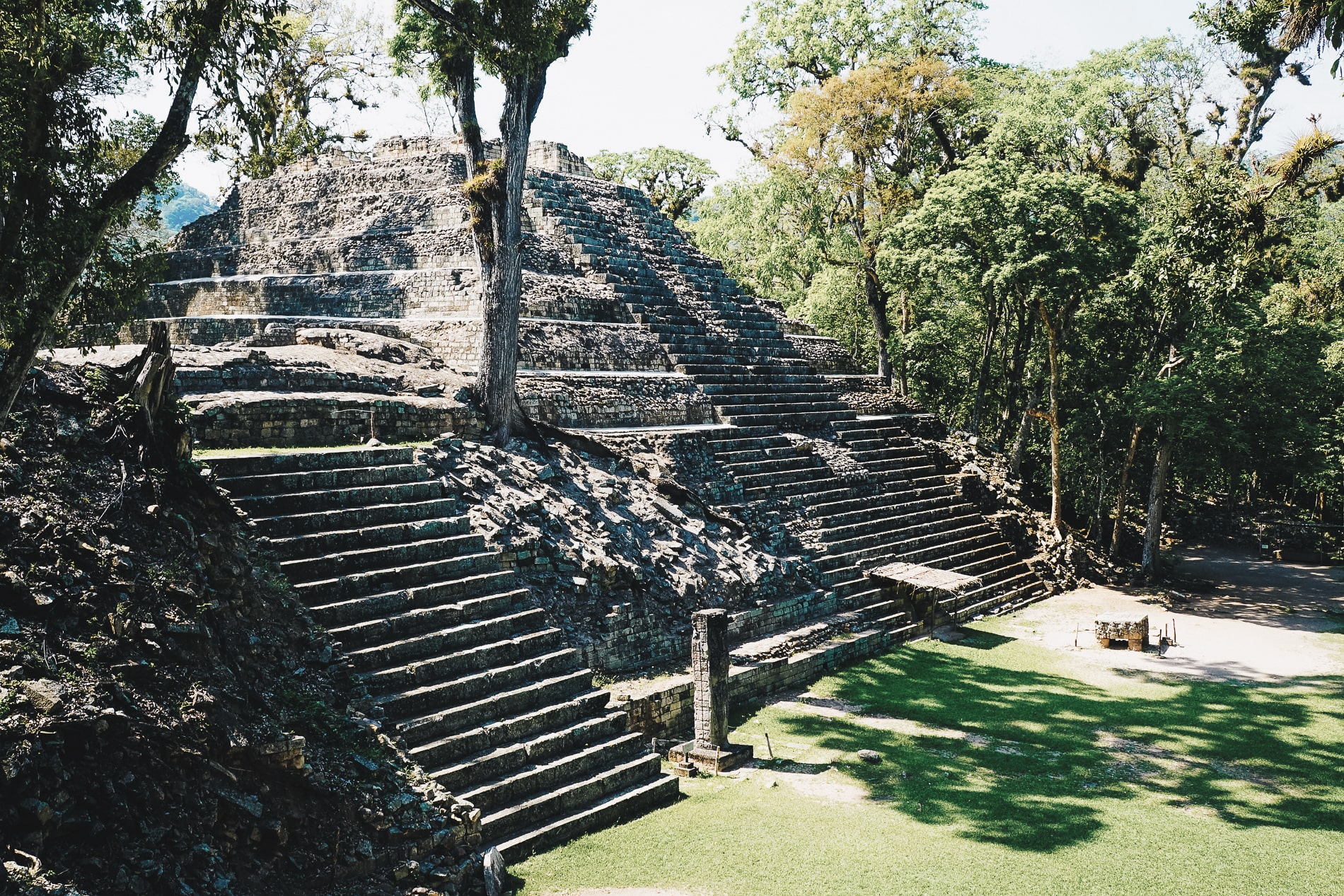
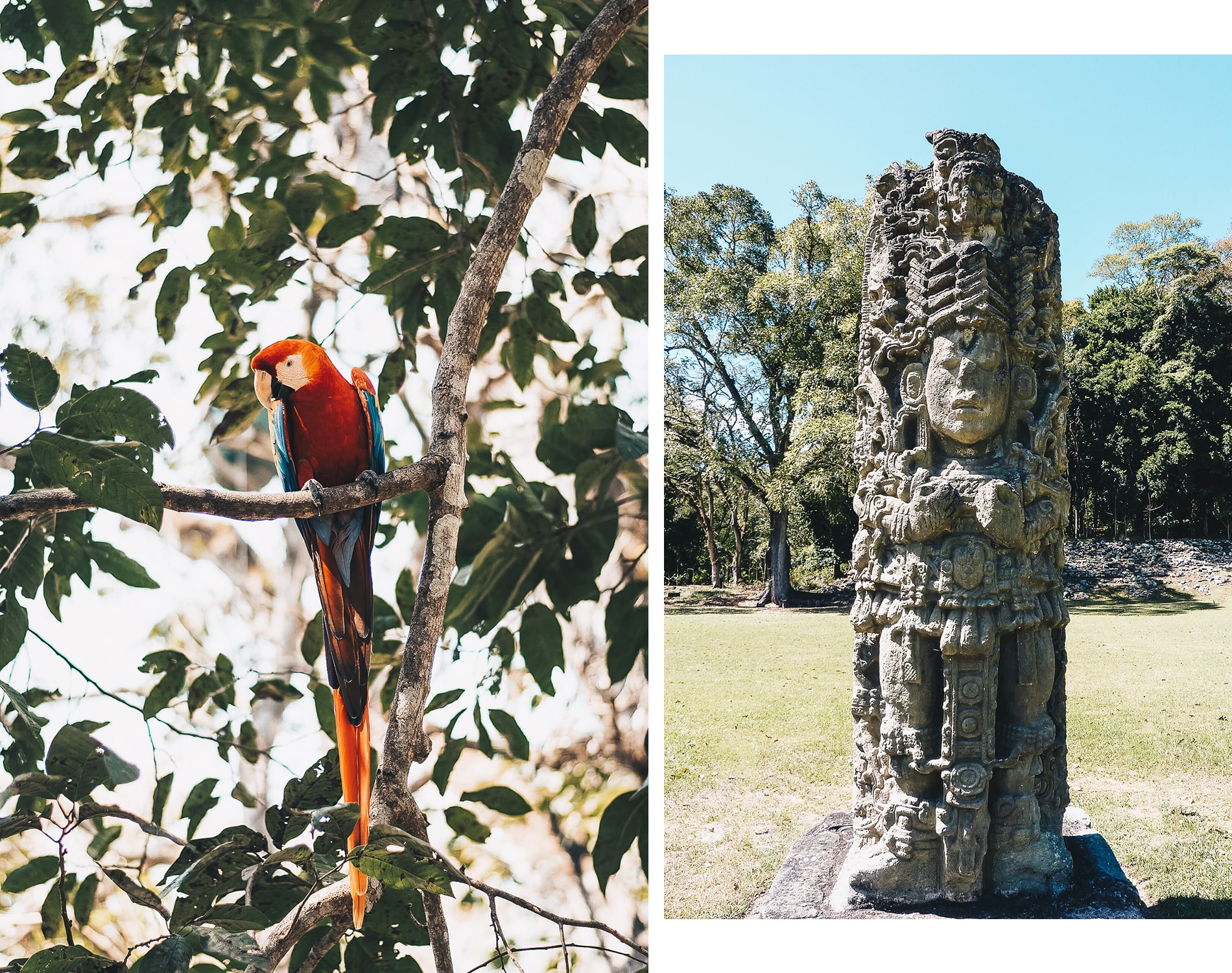
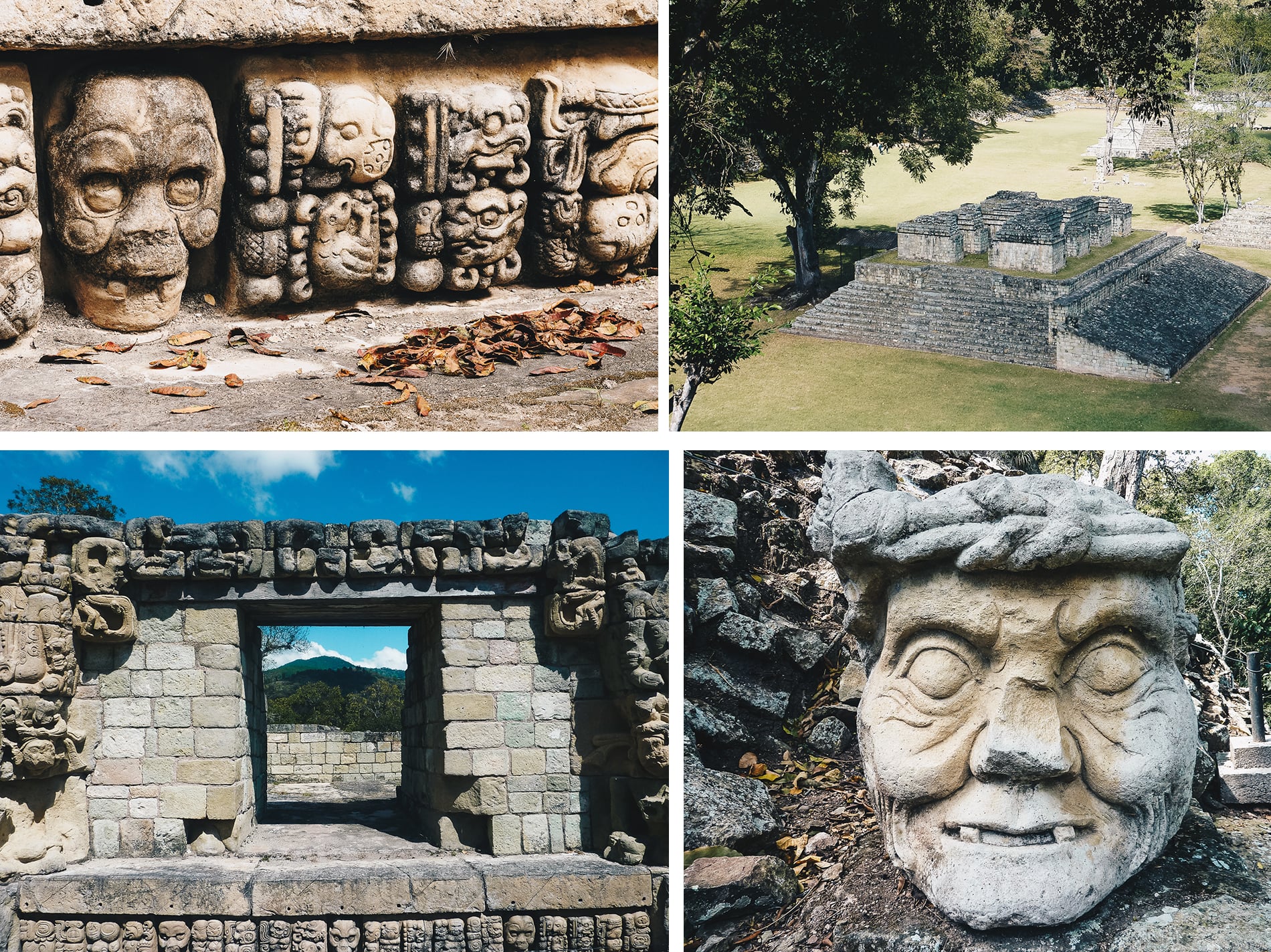
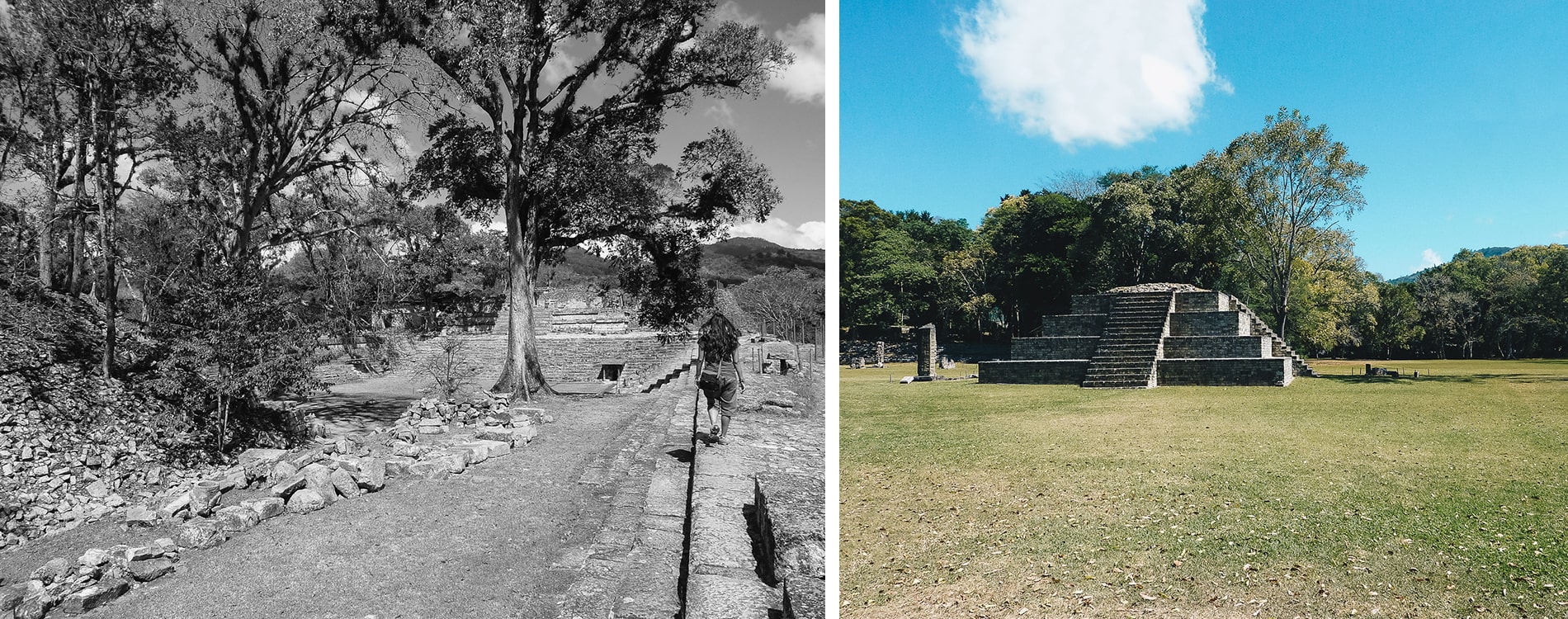
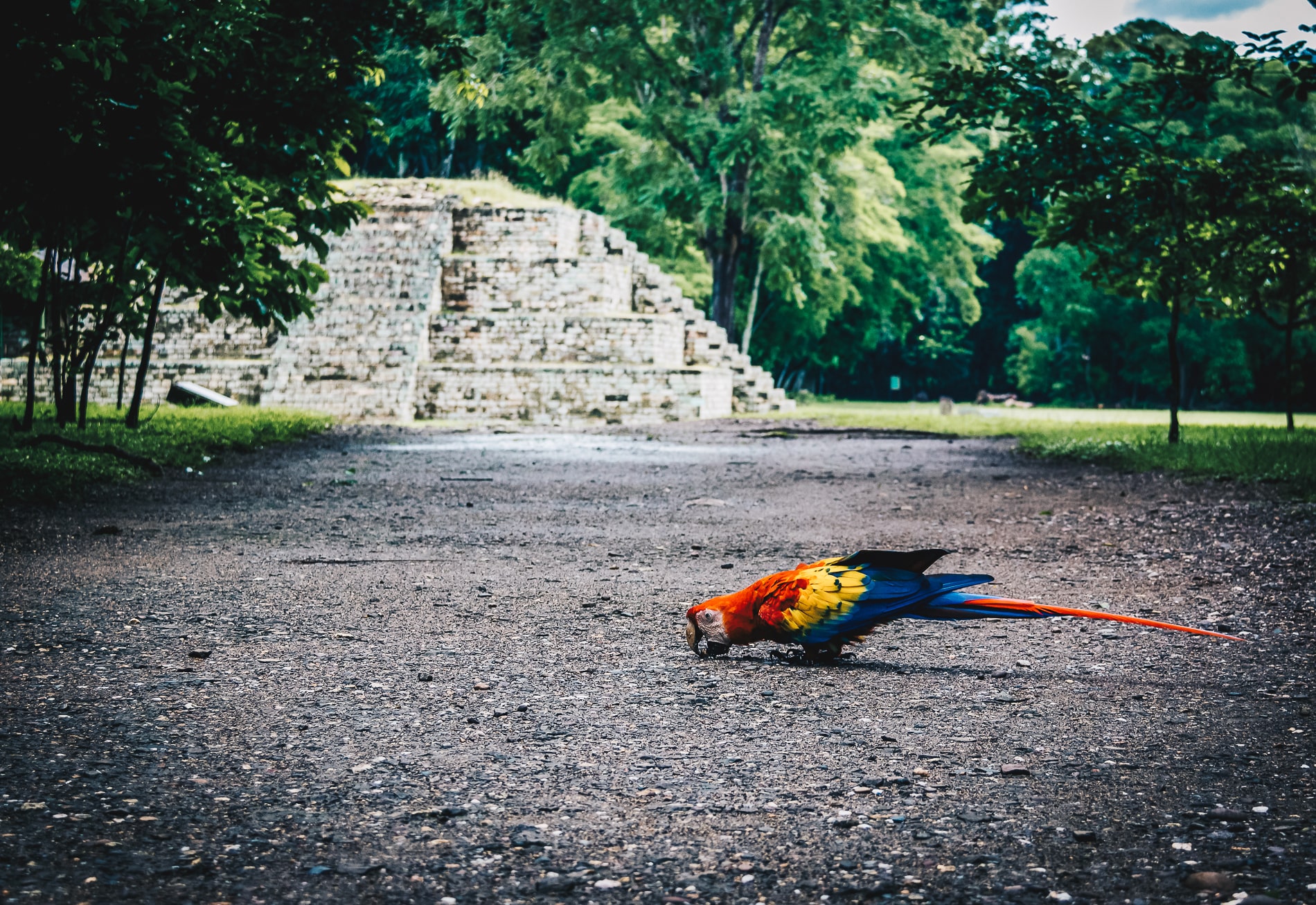
| NATURE, JUNGLE AND PARKS IN HONDURAS
On the land side, although poaching and deforestation are a major problem and the means to combat them are limited, Honduras is a country with a varied landscape, boasting a record number of natural parks and reserves covering almost a fifth of its territory. You won’t be disappointed if you enjoy contact with nature, horseback riding and many other activities in this beautiful environment. For hiking enthusiasts, I suggest a trip to Cerro Las Minas, a peak rising to 2436 m in Celaque National Park.
The country also abounds in endemic species and exceptional ecosystems that reflect the environmental diversity of Honduras. Indeed, Lake Yojoa (« el Lago de Yojoa » ) is renowned for its bird-watching. La Tigra National Park near Tegucigalpa, the capital, is home to bromeliads, ferns, orchids, pumas if you’re lucky enough to spot one, and over 200 species of birds, including Guatemala’s emblem, the Quetzal. Finally, the Pico Bonito National Park, a great choice for its biodiversity, waterfalls and large forests.
For plant and tropical garden enthusiasts, the Lancetilla Botanical Garden, not far from Tela, is one of the country’s most important nature reserves, with hundreds of plant species and a wide variety of bird species
At the far end of Tela Bay, you’ll find the Jeanette Kawas National Park, nicknamed Punta Sal, features swamps, rainforest and a coastline dotted with coves. Right next door, the Park of Punta Izopo on the north Caribbean coast, with its exuberant vegetation and abundant wildlife. Discover this bountiful natural environment on a kayak trip through the mangrove canals. Imagine a trip by pirogue through a wildlife reserve, where you plunge into the jungle, following the river through mangroves, accompanied by the sounds of the jungle. This reserve is impressive, with over 345 species of birds, including toucans, as well as species as diverse as crocodiles, caimans and howler monkeys.
The Río Plátano Biosphere Reserve, a Unesco World Heritage site, is home to an abundance, variety and preservation of flora and fauna (howler monkeys, jaguars, sapajous, caimans, hummingbirds, macaws, large hoccos…). Quite simply, it’s the preferred destination for those wishing to discover the Moskitia, a vast area of rainforests and swamps that is home to one of Central America’s largest nature reserves as well as the Tawahka Asangni reserve. This is a place that has to be earned because it is very difficult to access, so you will need a guide for this exploration but also to be patient and alternate between several modes of transport: plane, bus, pirogues, 4×4, boats…. It’s in this unique setting that you can meet the Pechs, Tawahkas, Misquitos, Garifunas and Ramas, the local people who populate this area and who are unaccustomed to meeting travelers.
Finally, Honduras boasts natural hot springs such as those of the « Azacualpa Hot Springs » in which you can swim, but also waterfalls such as Pulhapanzak.
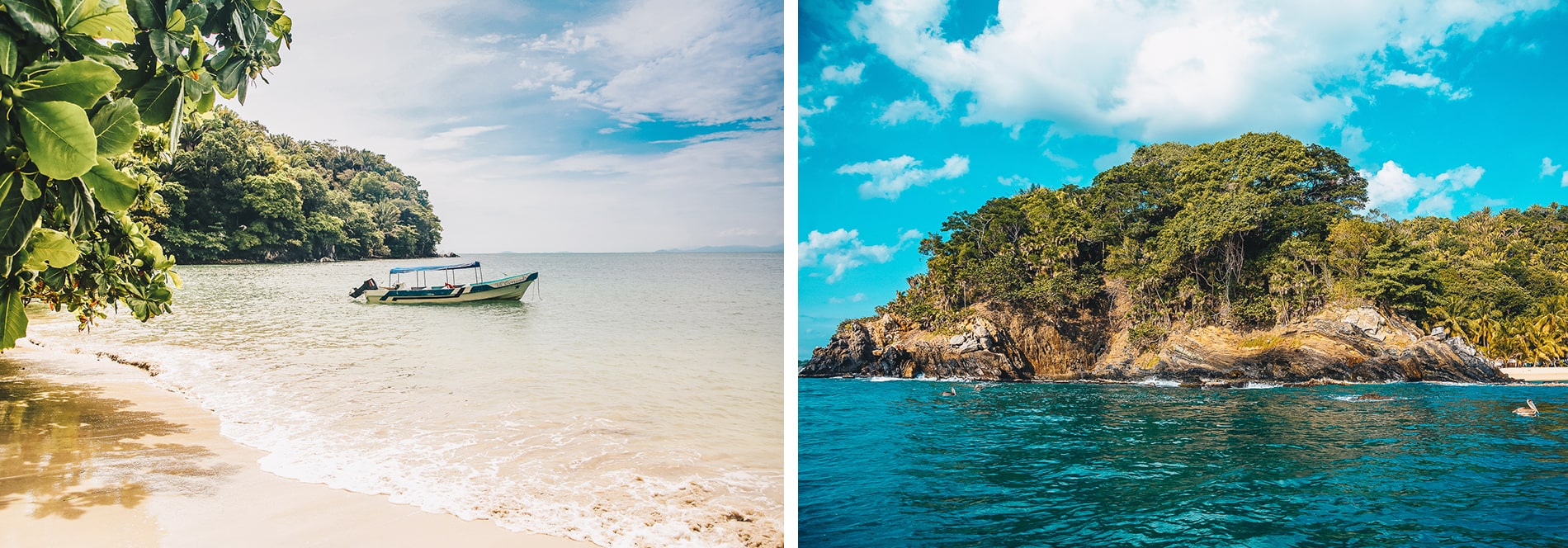
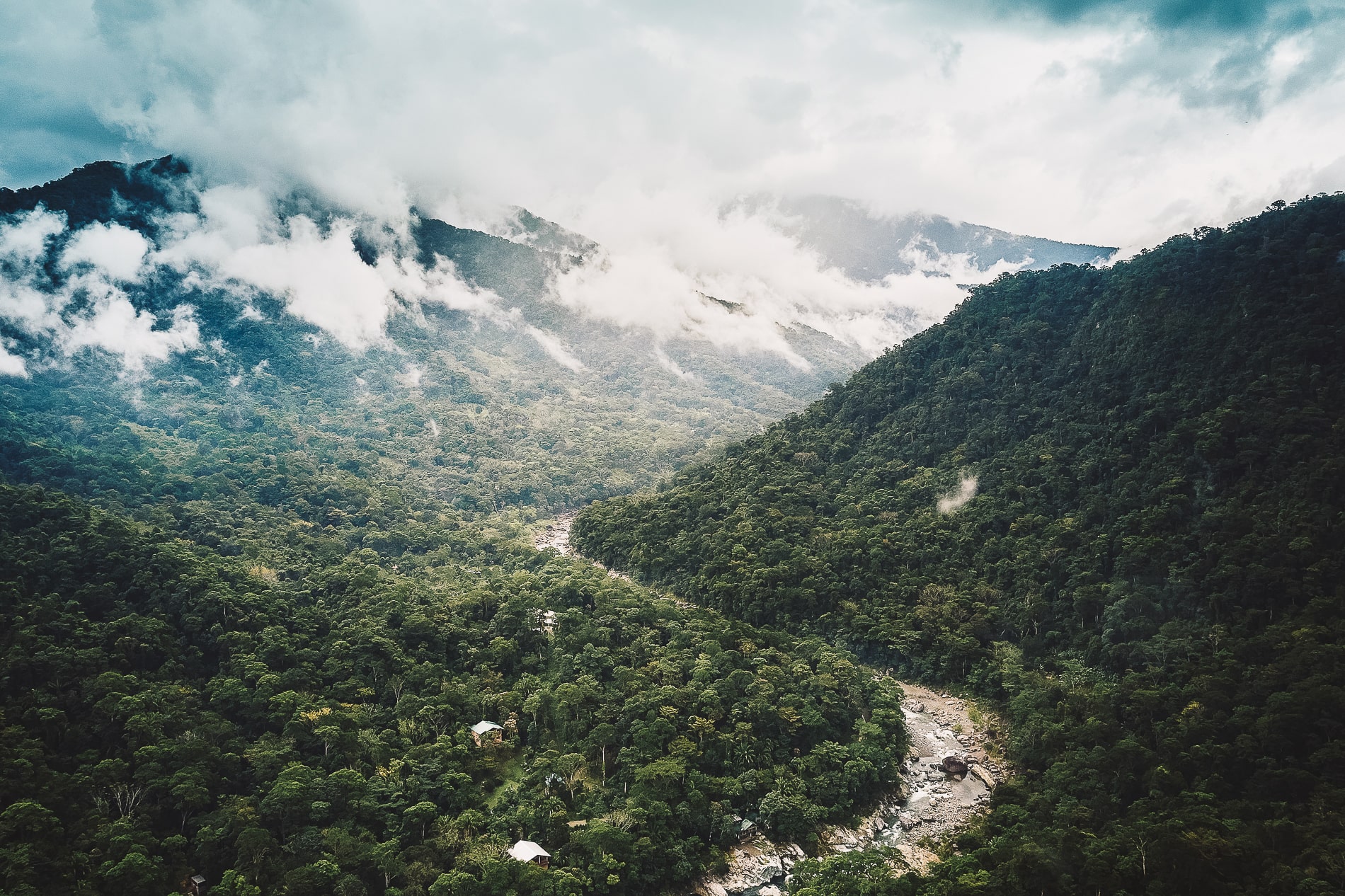
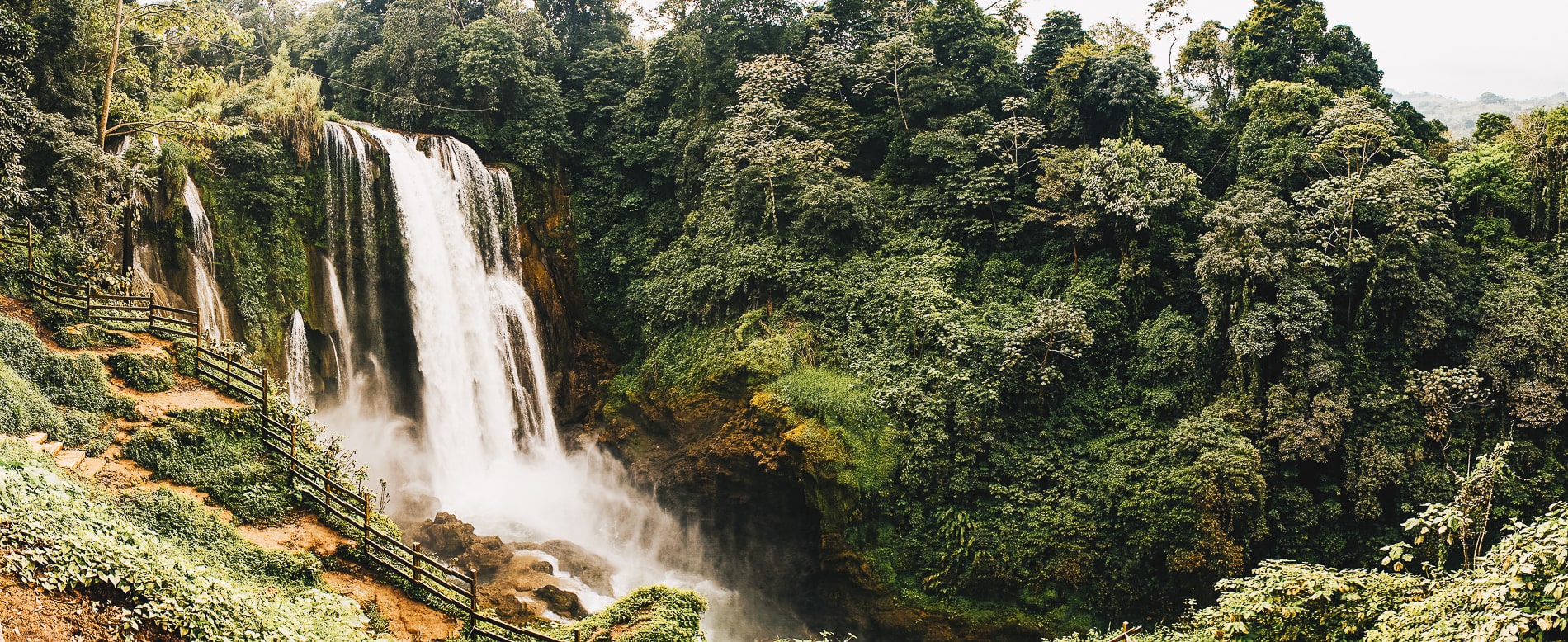
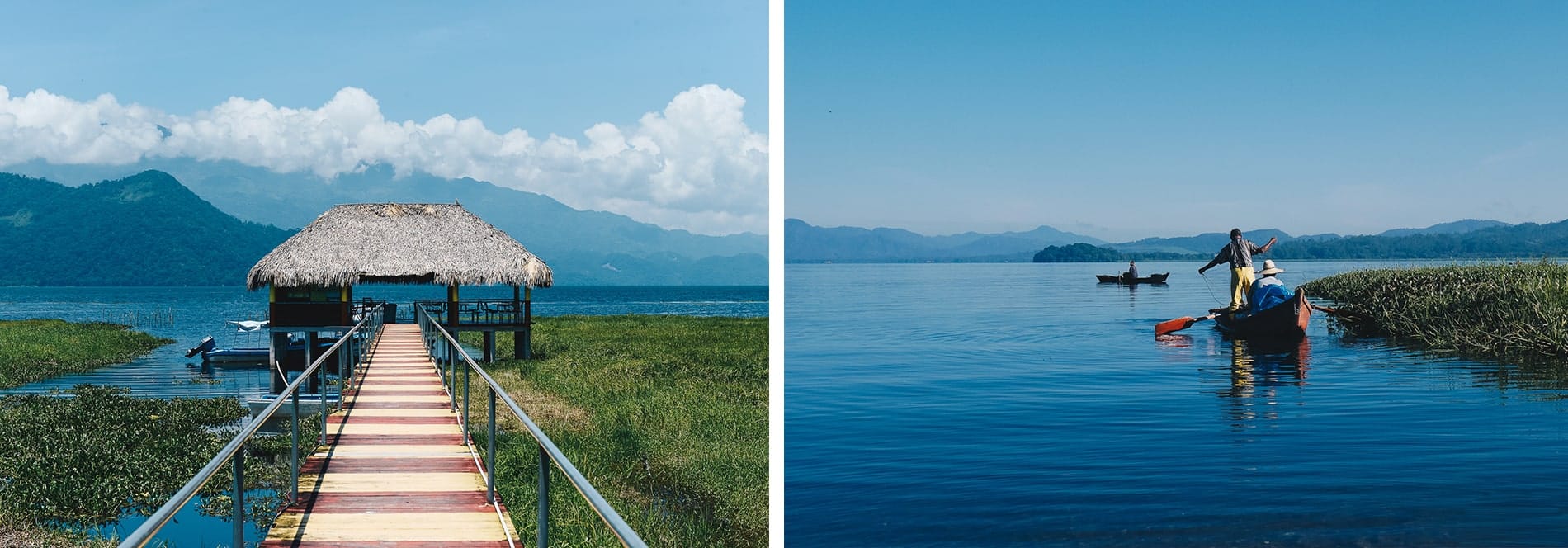
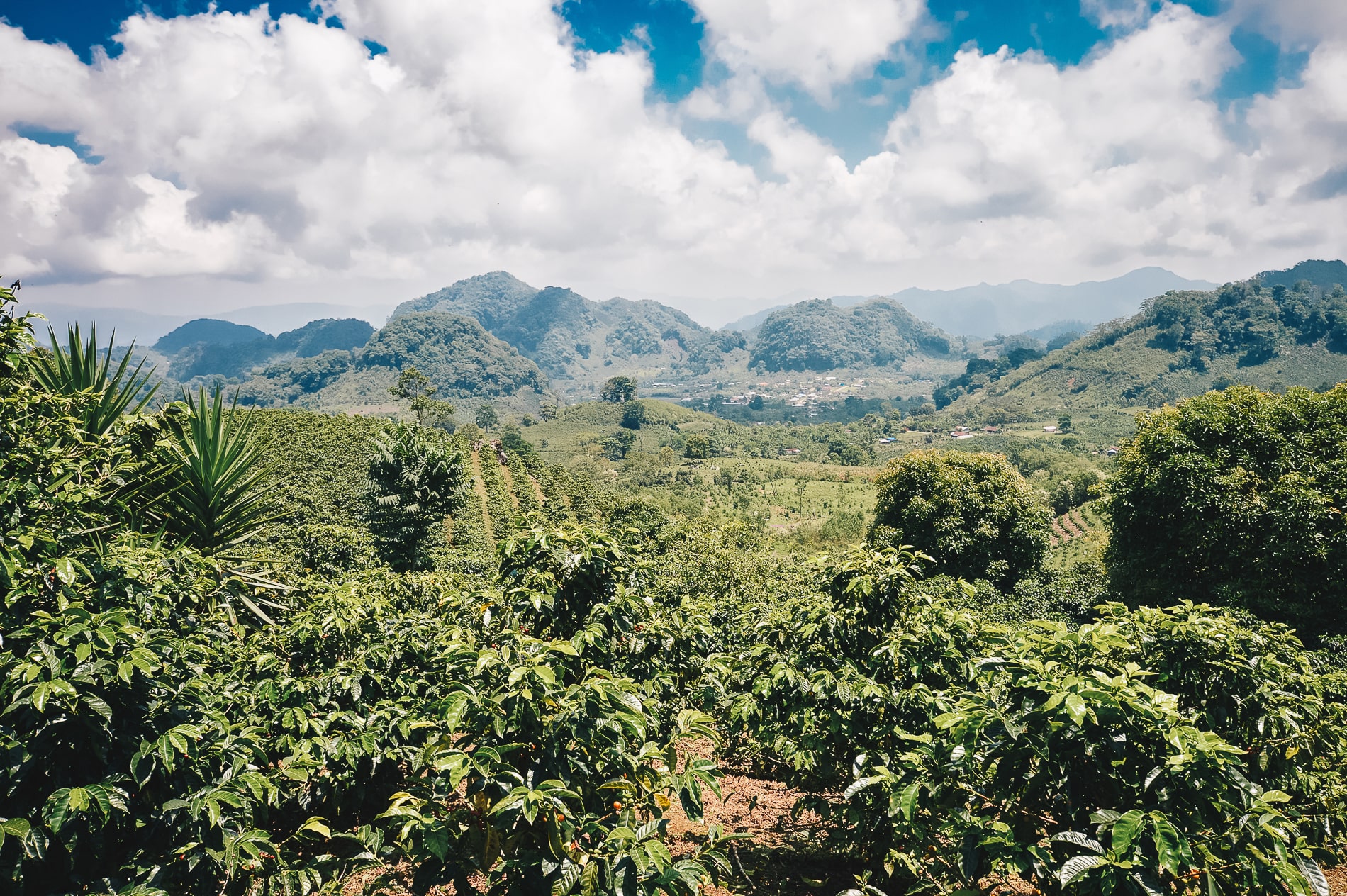
| THE DIRTY KEYS
On the seaside, Honduras boasts a rich underwater fauna and flora thanks to its proximity to the second largest barrier reef in the world after Australia. The Caribbean coast is a haven for manatees and dolphins, but it’s not the only one. To discover these unique seabeds, head for the atolls of the Cayos Cochinos Marine National Park, which are low-lying coral islands in tropical oceans. The Garifunas Atoll of Chachahuate is just an incredible place. If ever there was a paradise on earth, this is it, according to the locals, and I approve. At 220 meters long, this island is bordered by a white sandy beach, with a backdrop of coral and crystal-clear water. The island of Chachahuate is part of an exceptional marine reserve, as it has hardly been touched by man. Hundreds of species of fish inhabit the area: coral fish, sunfish, groupers and thousands of other colorful fish that can be observed at close quarters by diving, snorkeling or diving with just a mask and snorkel. Accommodation is also available in tents, hammocks or the island’s typical wooden houses. Excursions are available in the surrounding towns: sailboat cruises lasting from 1 to 3 days in the Cayos Cochinos archipelago, walking tours, boat trips, scuba diving and deep-sea exploration.
I have wonderful memories of this heavenly spot, as we were truly alone in the world playing in the water with the children. I’d love to be able to go back for longer and sleep there.
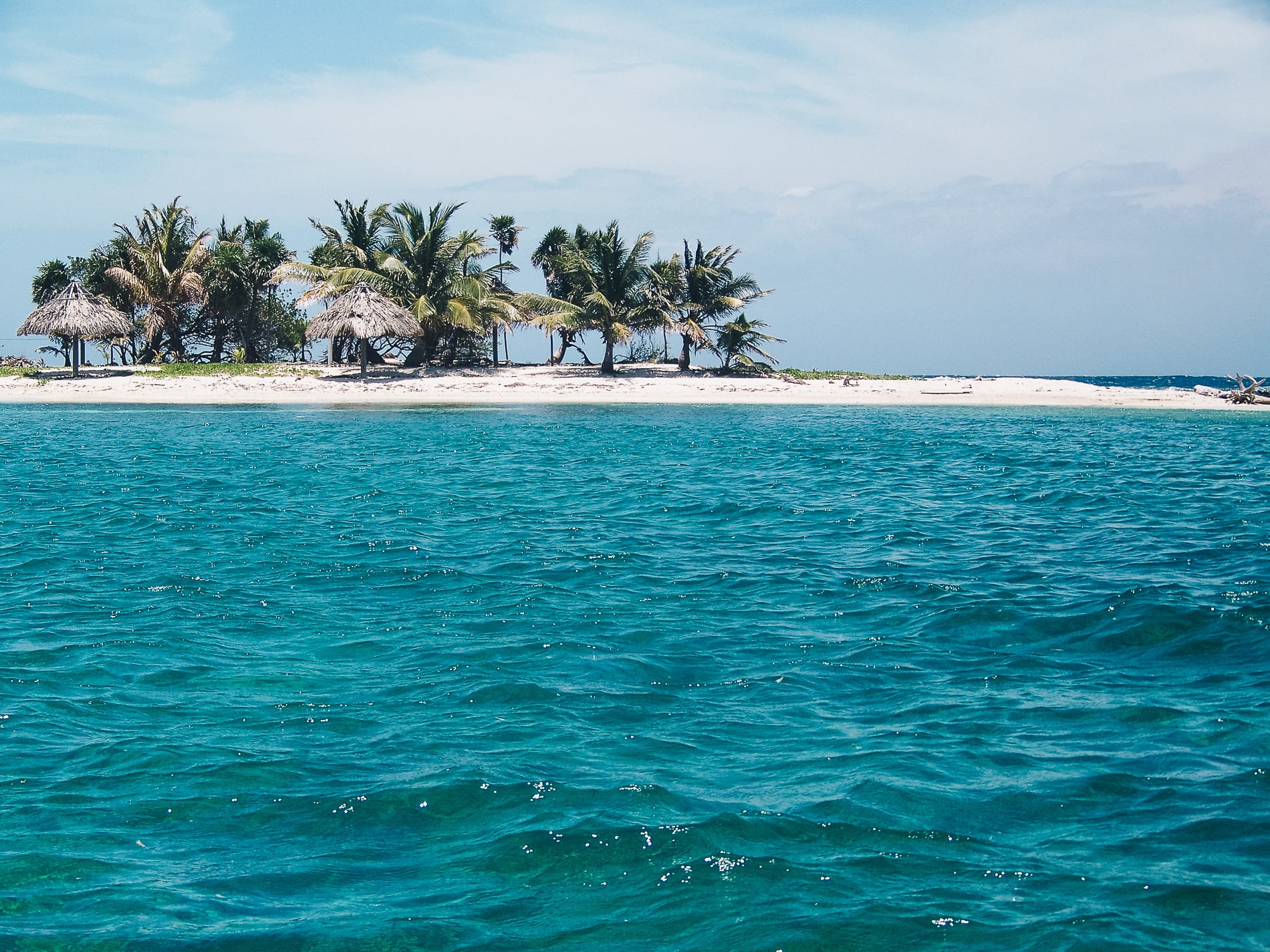
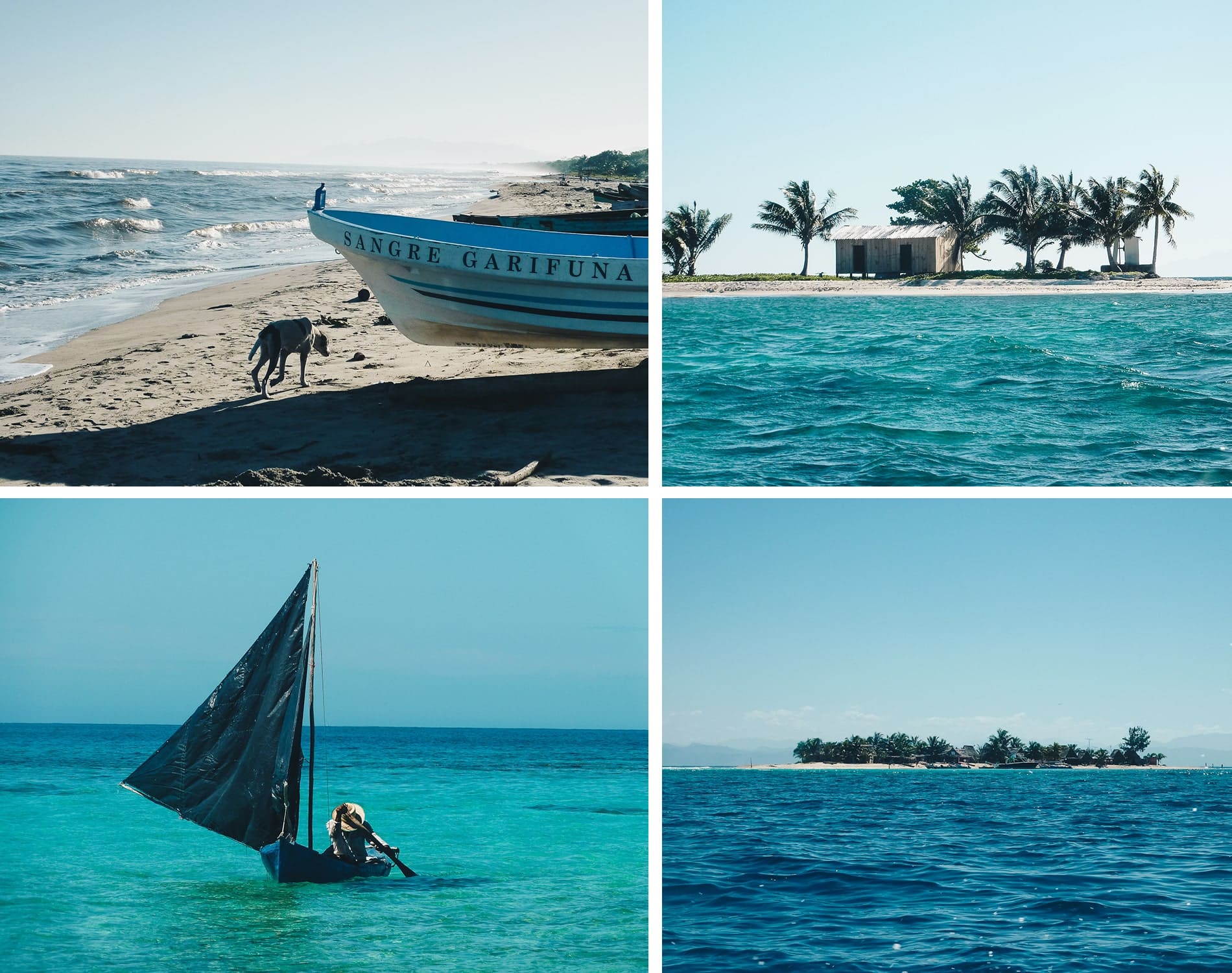
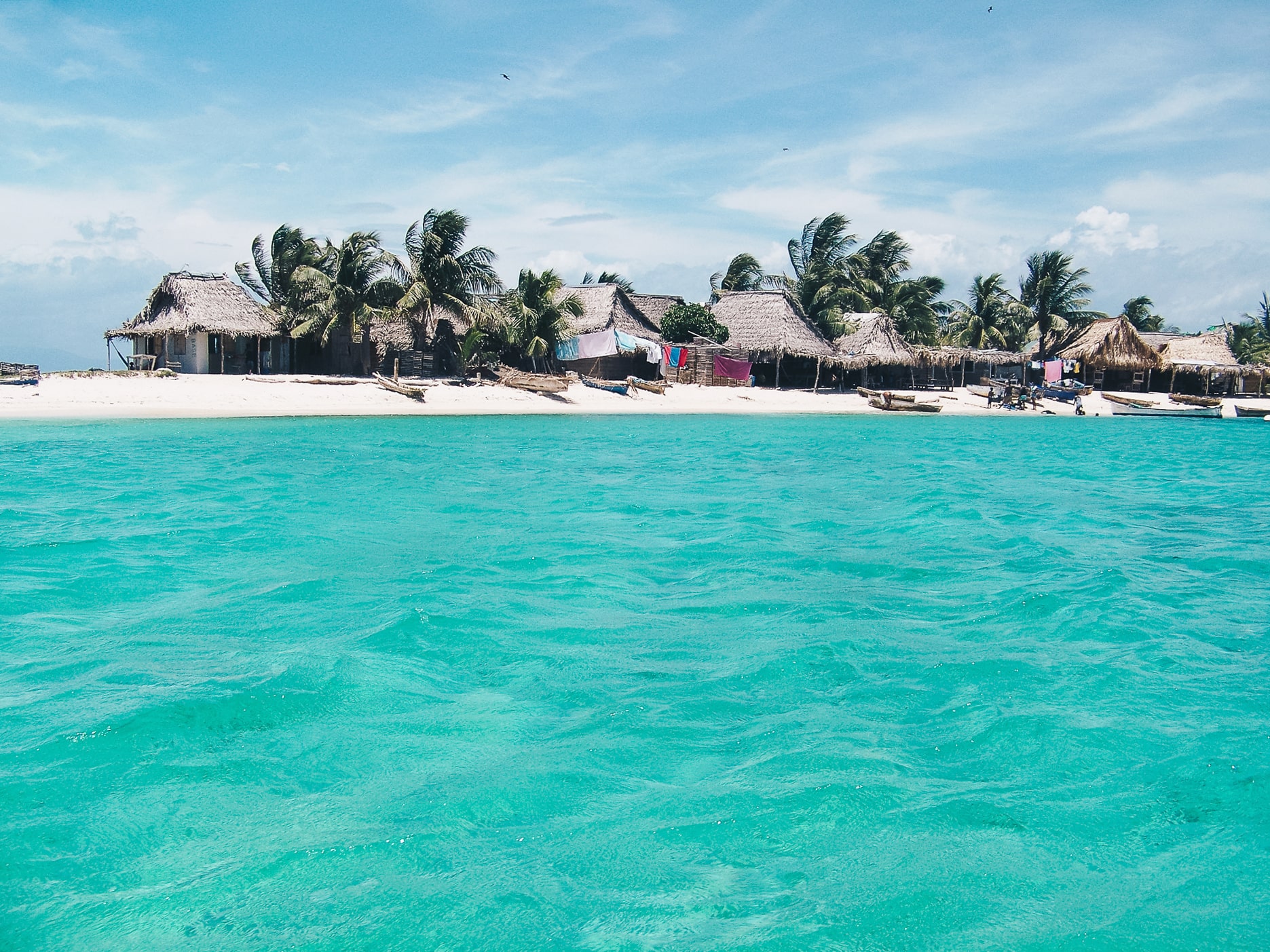
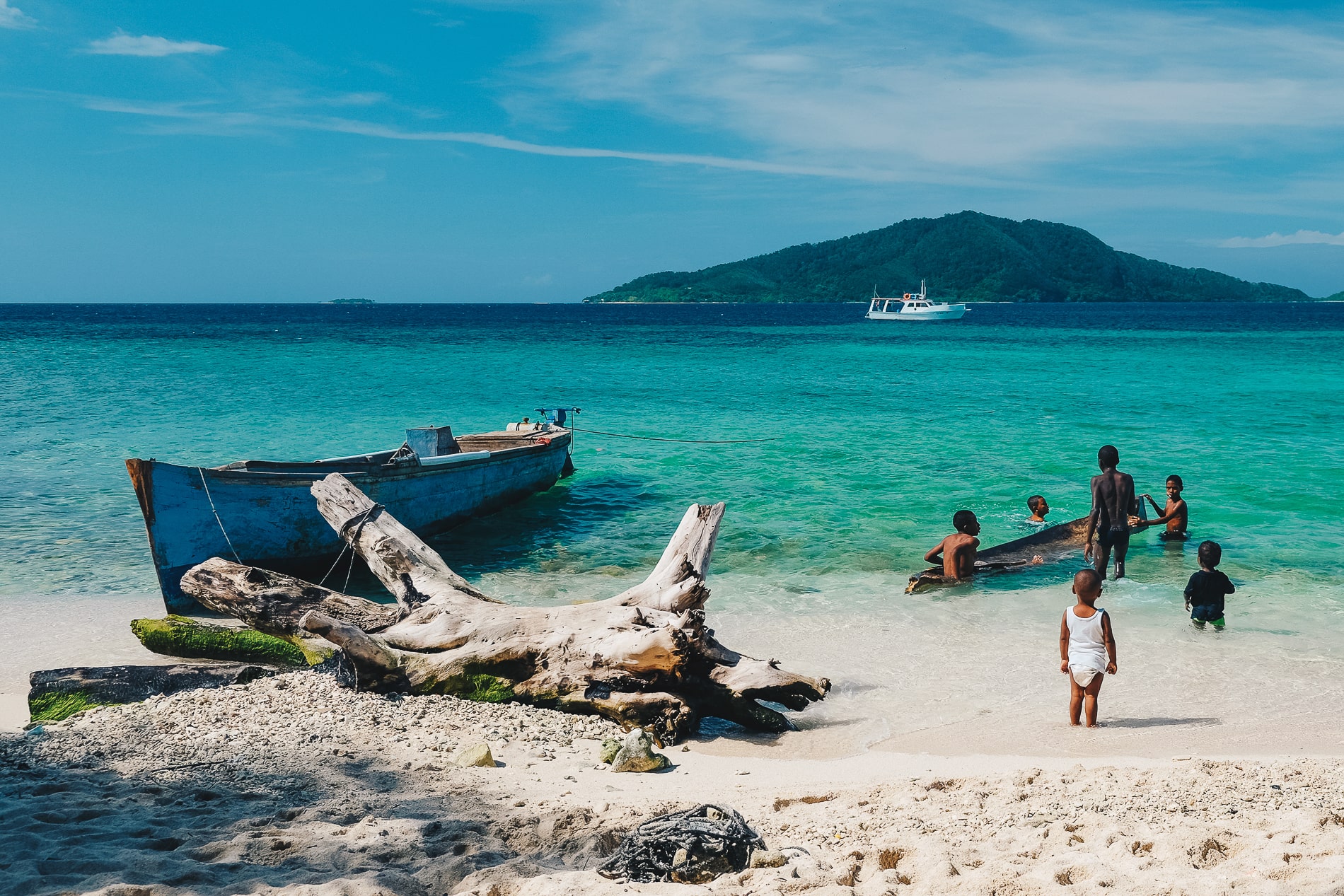
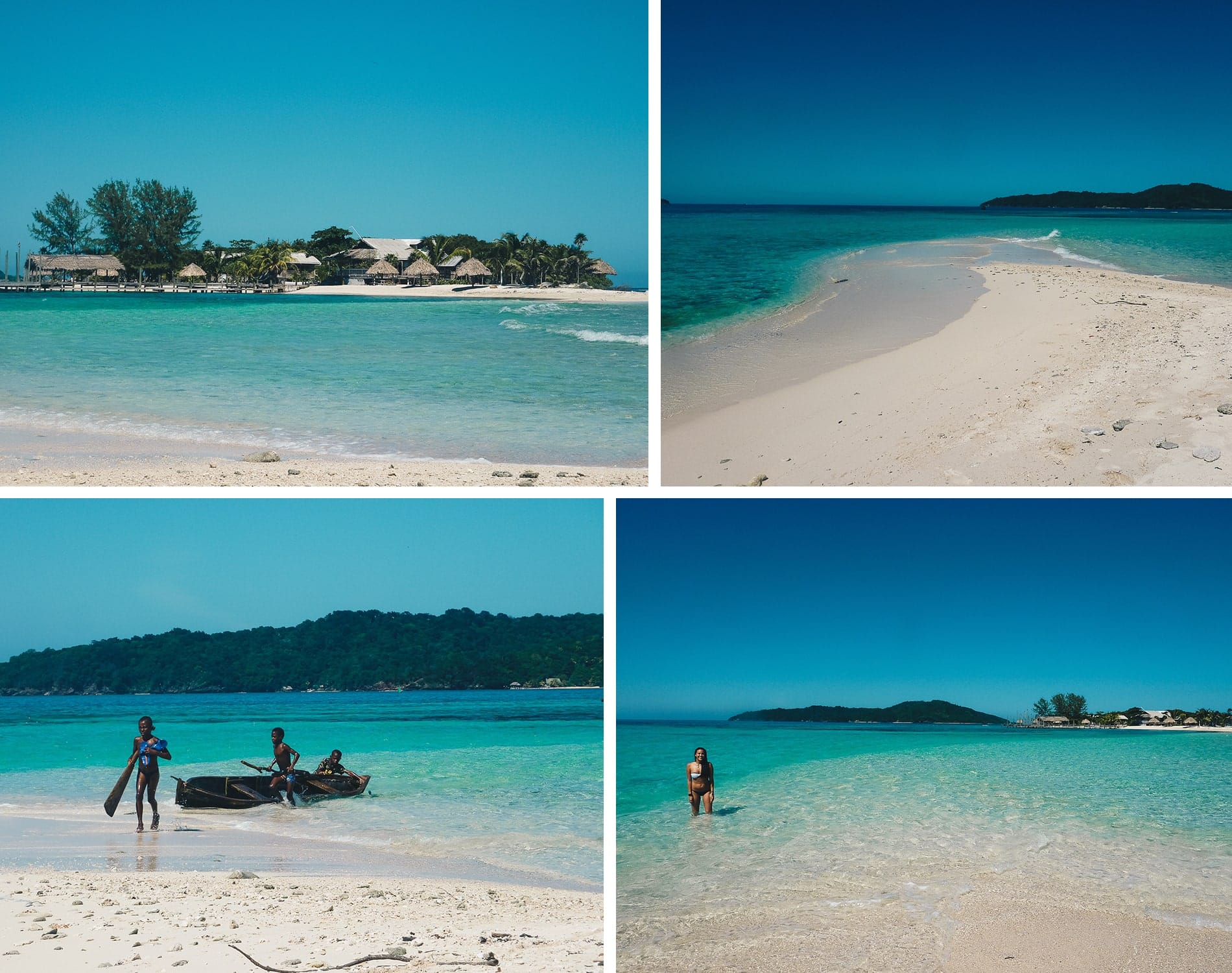
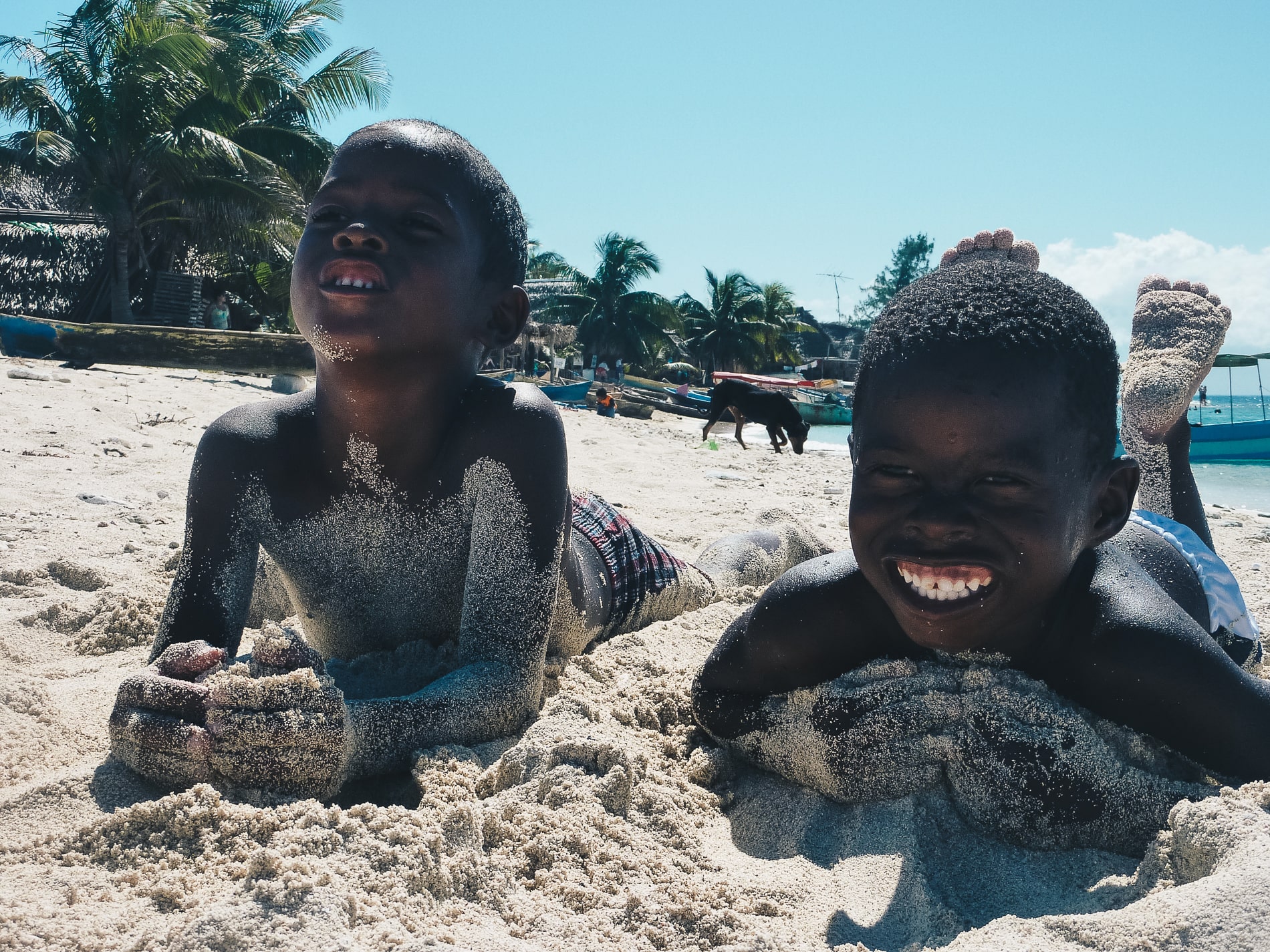
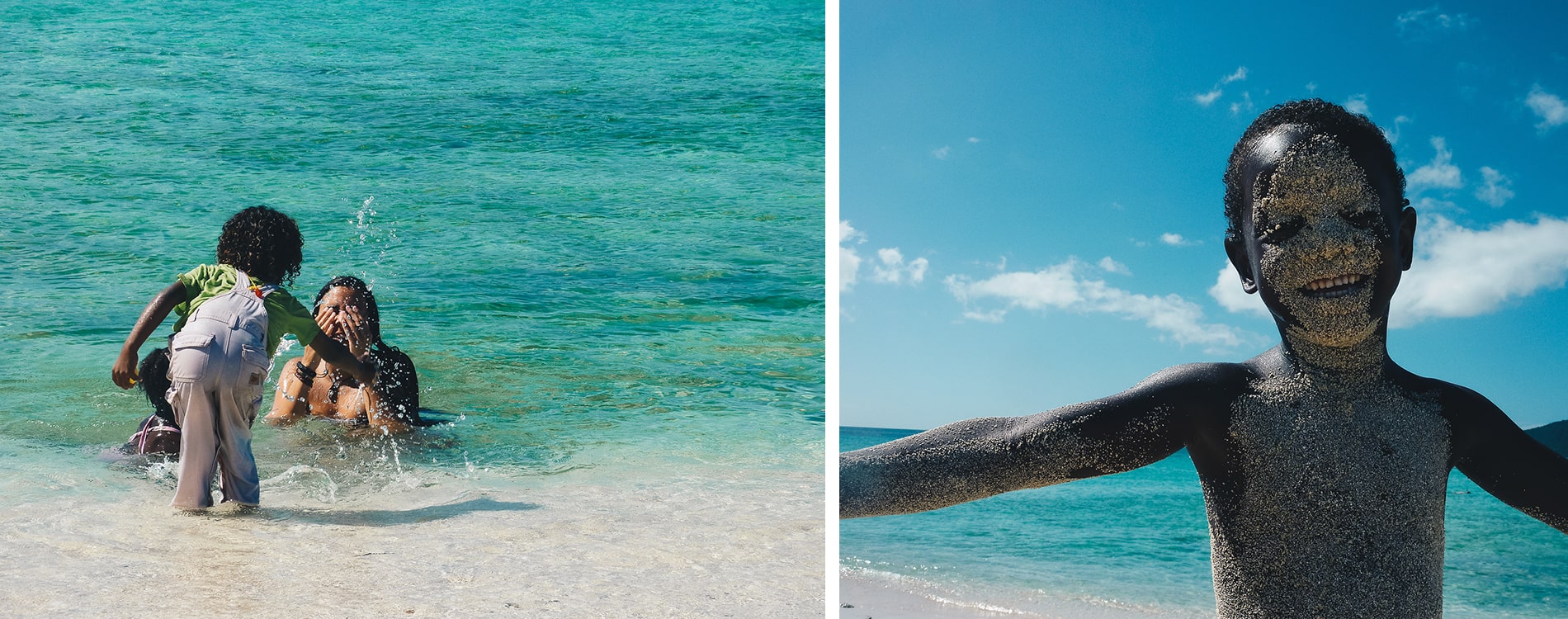
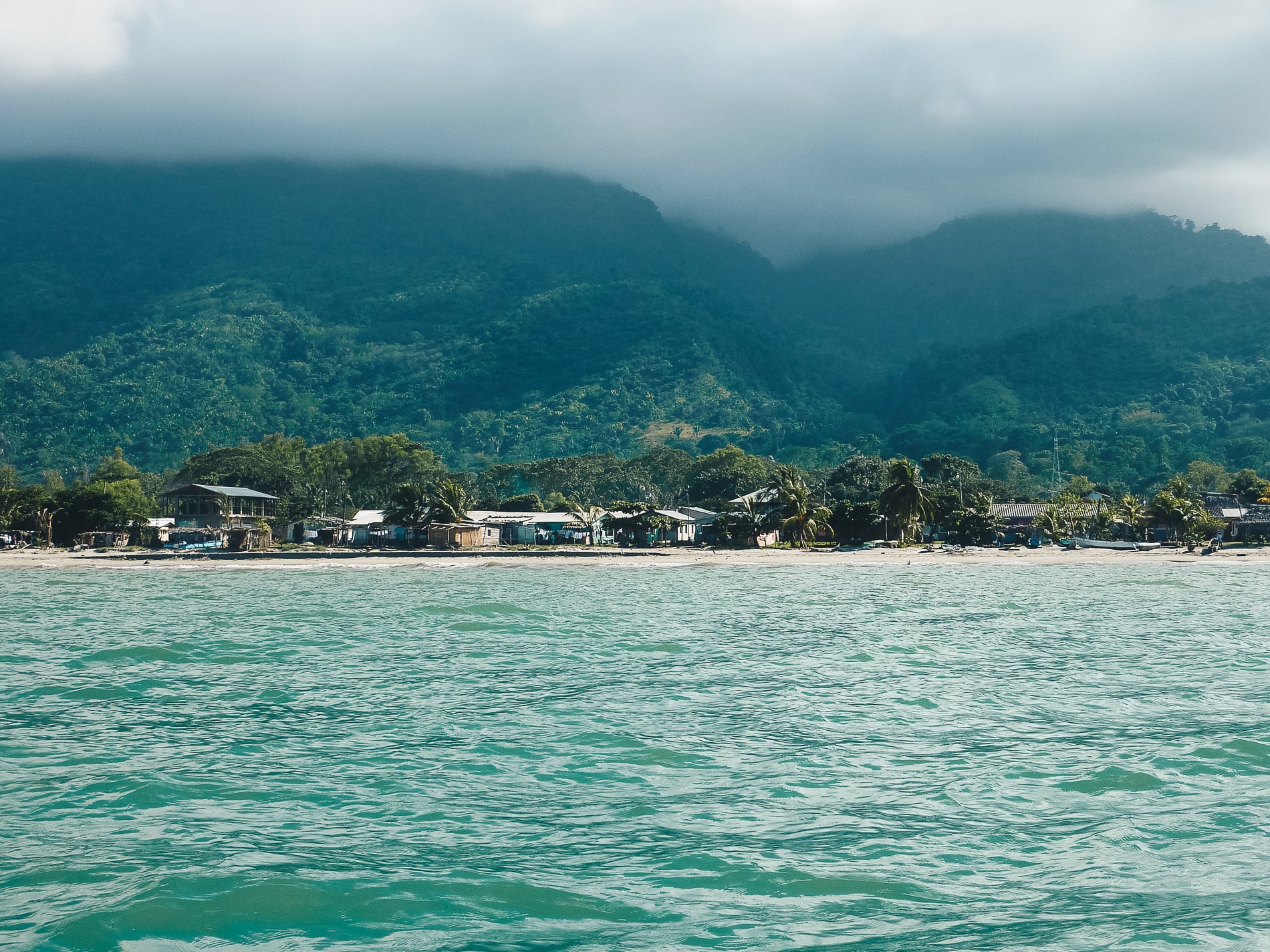
| UTILA AND ROATAN, THE ISLANDS OF THE BAY
For those who’ve come to enjoy the sun, sea and diving, head for the Bay Islands Marine Reserve, divers’ favorite destination. Here you can see sea turtles, eagle rays, stingrays, grey sharks, nurse sharks, whale sharks, manta rays, hammerheads, seahorses and hundreds of tropical fish. The stars of Roatan are the colony of Atlantic dolphins that inhabit Anthony’s Key lagoon, and further offshore a dive site that is home to a few shy specimens.
Three islands make up the Bay Islands:
- Guanaja the least developed and the most difficult to access.
- Roatán which attracts travelers with its beautiful white-sand beaches and festive atmosphere.
- Utila often chosen by backpackers and scuba diving enthusiasts. It was on this island that we stayed for a week to pass our level 2 diving course (Advanced PADI).
- Utila
We came to Utila in March to take our diving diplomas and hopefully catch a glimpse of whale sharks! We had chosen a dive center, Alton’s dive center, where we could sleep on site, as you have quite a few morning, wreck and night dives to pass for this diploma. Many organizations offer to accommodate you at better prices if you book “fun dives” with them, i.e. a package of dives that will cost you less! It’s not a bad solution at all, because at least you’re sure not to miss the boat for the early morning departures, and the all-inclusive packages (accommodation and diving) are unbeatable value.
If you’re looking for other types of accommodation, you can always find what you’re looking for here:
→ Villas
Utila’s waters are quite clear, and you can spot a wide variety of colorful fish even with a mask and snorkel. I had very little time to enjoy Utila’s beaches, but you should know that the island’s most beautiful beaches are private, and you often have to pay an entrance fee. If you’re looking for wilder beaches, I advise you to form a small group with other travelers (as the price is quite high) to hire a small boat and head for the north coast of the island.
As I said above, we tried our luck at seeing the whale shark, but unfortunately we were still a little early in the season and missed them. This huge, harmless shark lives in tropical waters, mainly in deep water. At Utila, whale sharks are a frequent sight in the pass. The diving club will take you to the site and, thanks to its experience, spot the presence of the famous fish. Once you’re ready, get in the water for a closer look and the unforgettable opportunity to swim alongside the world’s biggest fish. You might even be lucky enough to come across it on a dive.
For whale shark watching, choose the months of April to June.
On the island of Utila, you can get around on foot, as there are no cars, just local tuk tuks, golf cars and a few motorcycles. Life seems to slow down and all the foreigners here are here for two reasons: to party and to dive. I soon found out why: it’s nicknamed a diver’s paradise.
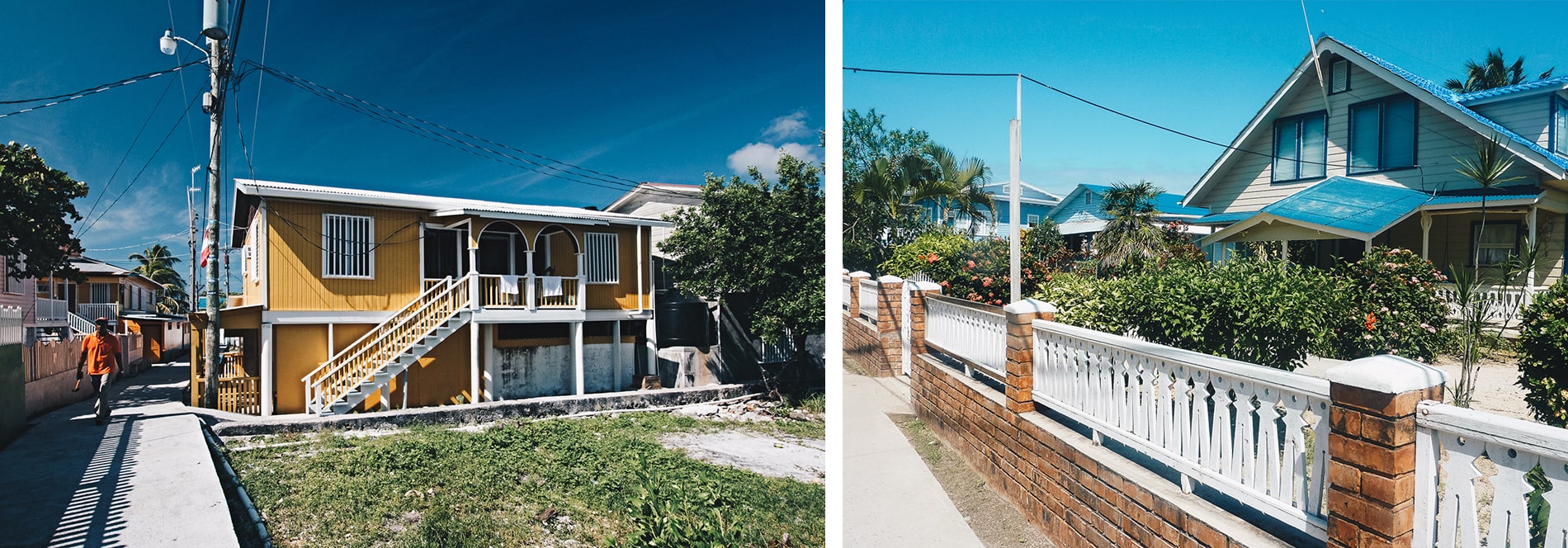
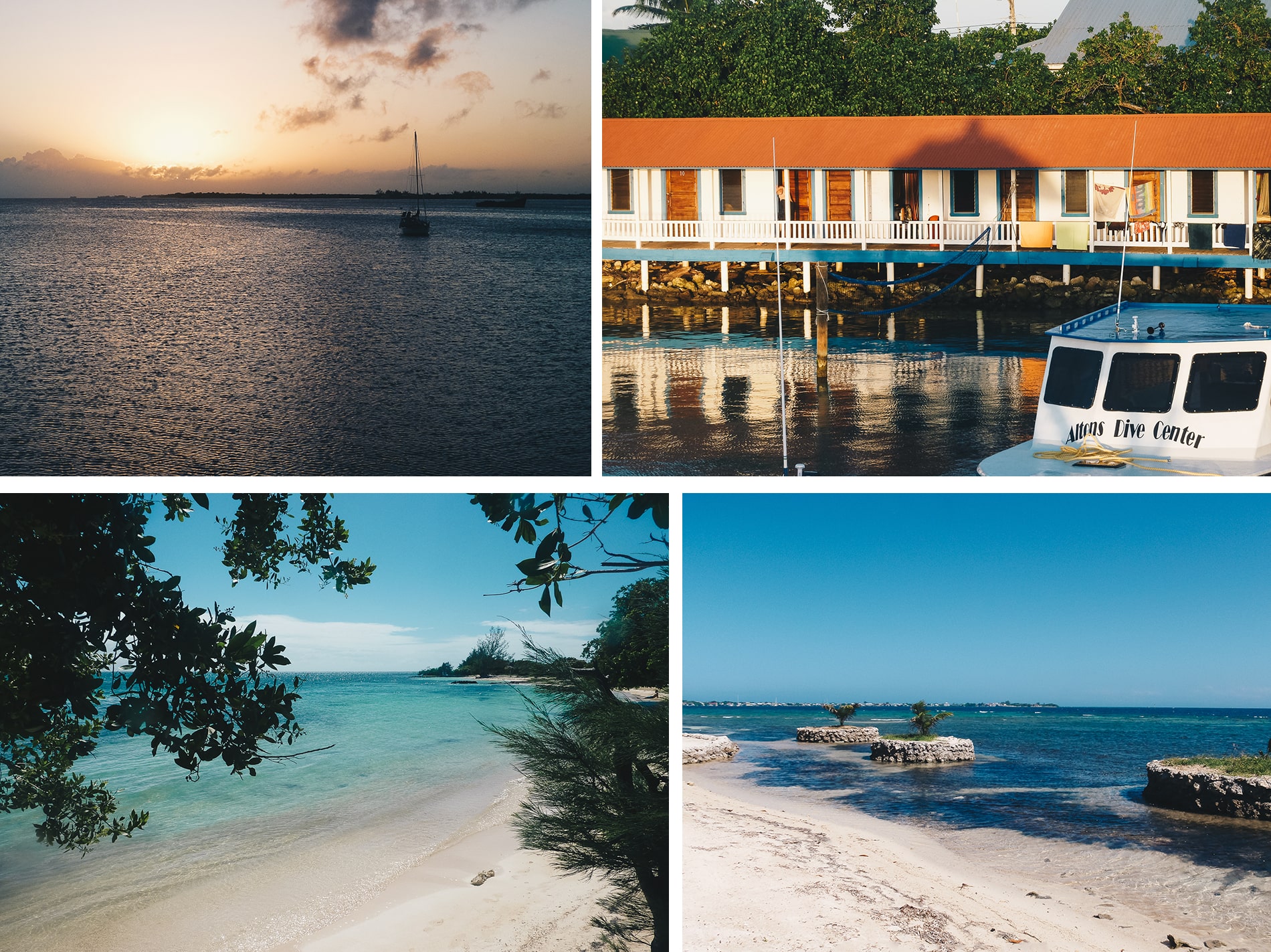
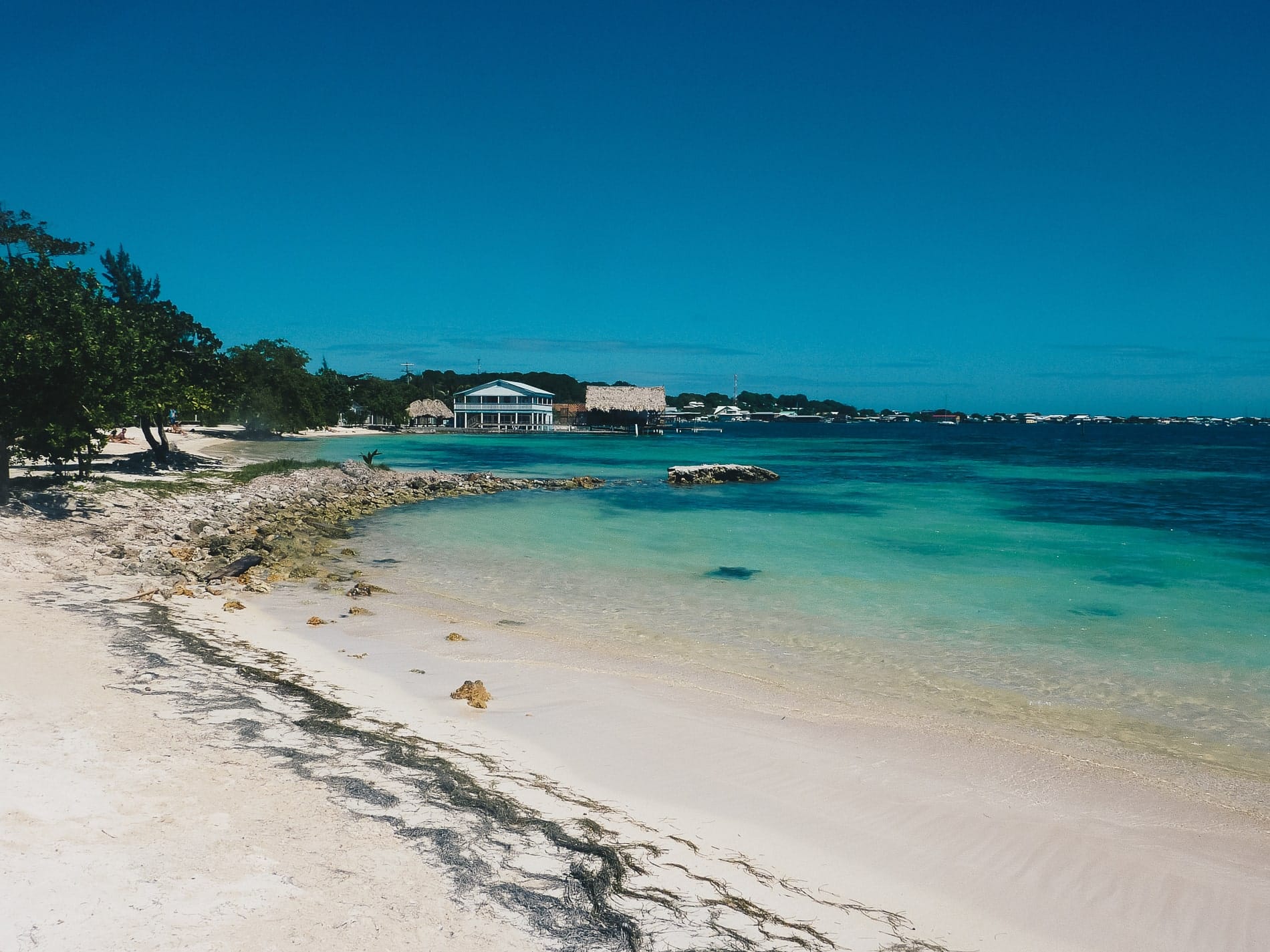
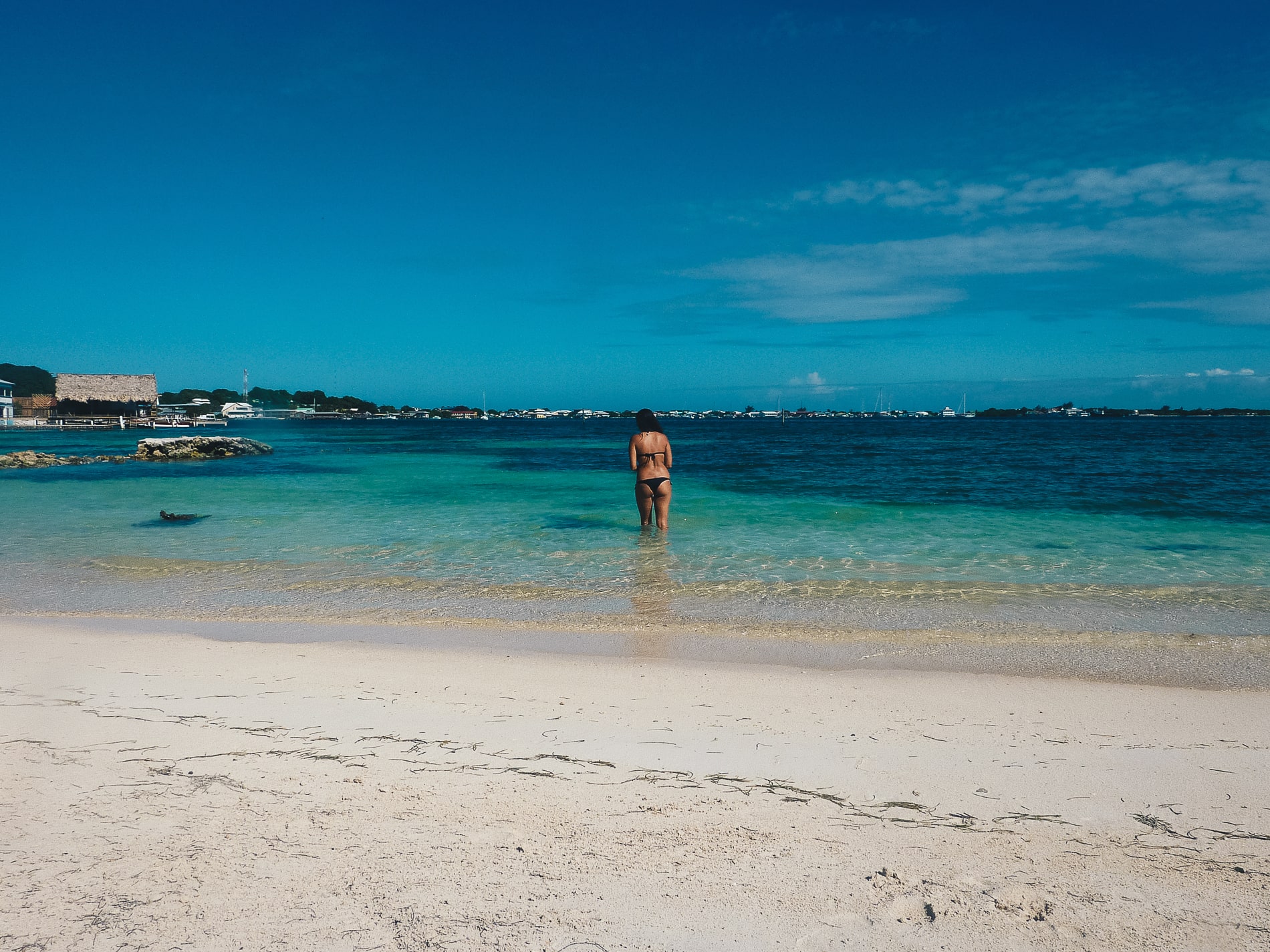
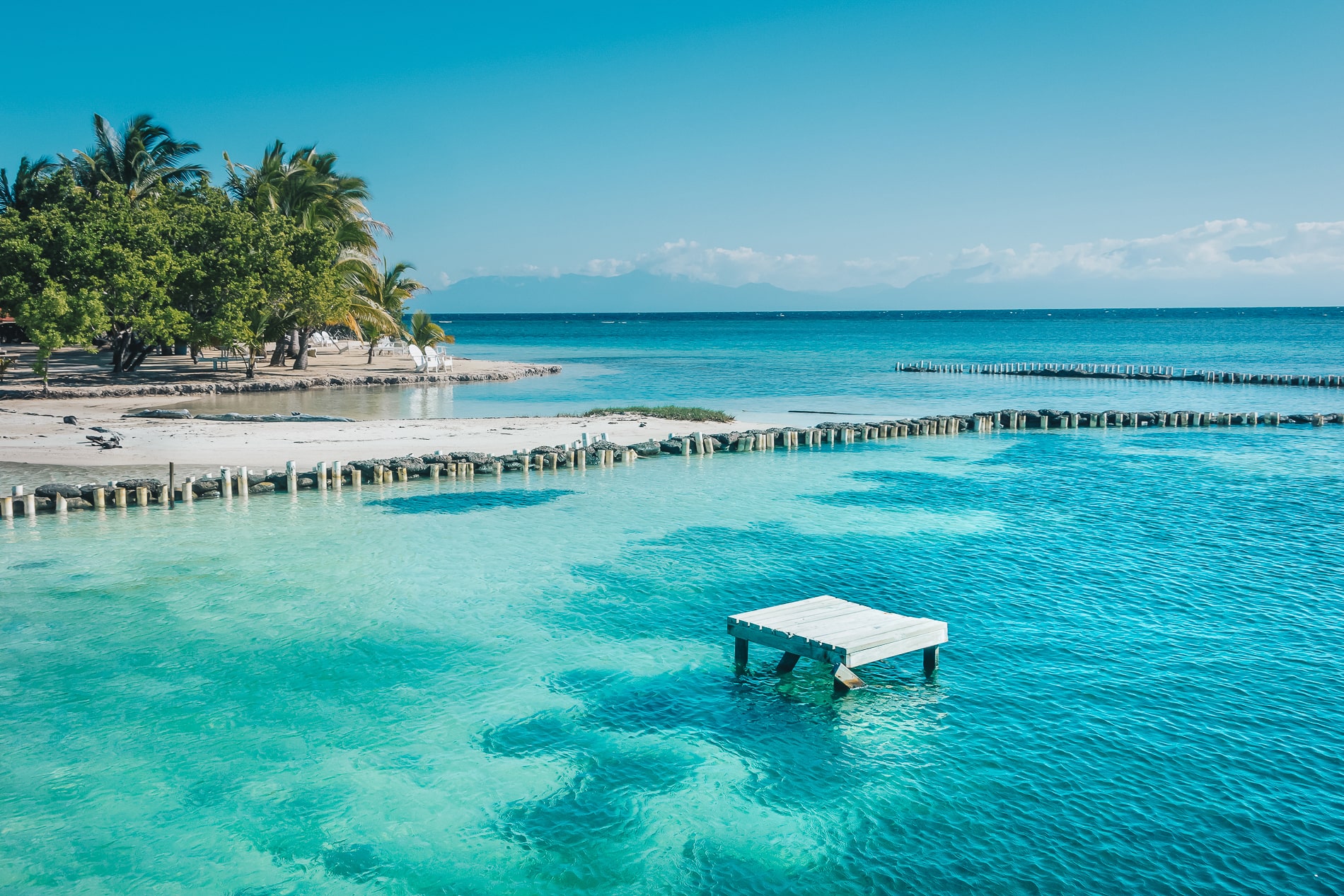
- Roatán
Roatán is the largest island and offers the most accommodation options. It’s different from Utila in that there’s already a lot more traffic and frequent roadworks due to the numerous potholes. The water in Roatán is just as clear as in Utila, and free snorkeling is available in several places.
If you love snorkeling, I’d strongly advise you to bring your own equipment, as renting it could be very expensive. In fact, you can expect to pay a minimum of US$15 per day for rental. In diving centers, it’s often more expensive.
Beware of sand flea and microscopic jellyfish stings, « les sea lice » in Roatán. These are baby jellyfish measuring 1 centimetre, almost impossible to see underwater, whose stings swell up after 24 to 48 hours for some people. With a little white vinegar, the pain should ease and fade.
You can also discover Oakridge, an authentic Garifuna fishing village, while West End is more touristy, with its pretty boutiques and beaches. Not far from this village nestles the most beautiful beach in Honduras, West Bay, where you can snorkel. Accessible by water cab from West End or by foot along a lovely path, approx. 1h walk.
Finally, remember to take cash to pay for tips, taxi-boats, small canteens…because even though there are a few ATMs where you can withdraw cash, especially in West Bay and West End, some don’t work or have run out of cash. Please note that credit cards are not accepted everywhere. There is a local currency, the lempira, but it’s easy to pay in US dollars.
Be aware that food is taxed at 15% and alcohol at 18%, so stay away from West Bay and opt for cheaper restaurants further away. And don’t forget to take advantage of the happy hours on offer everywhere.
For accommodation, you’ll find what you’re looking for here:
→ Villas
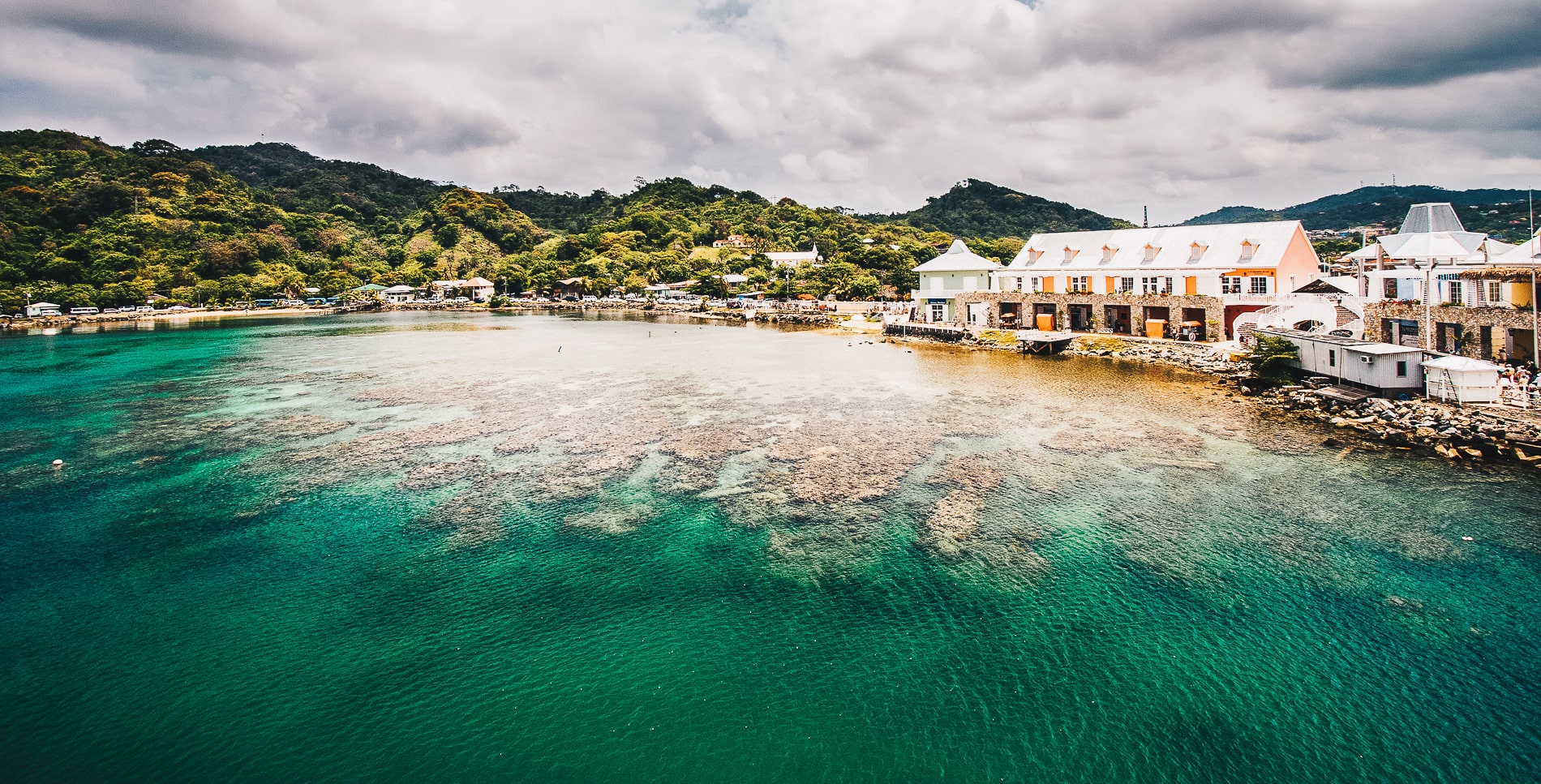
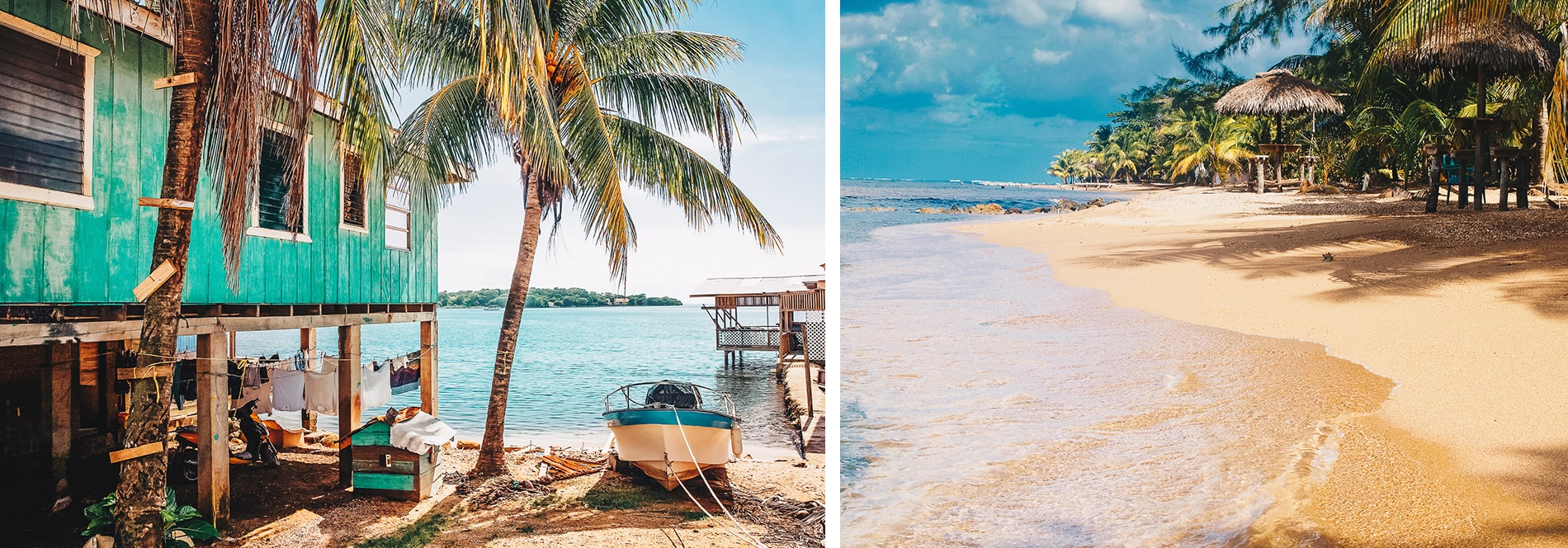
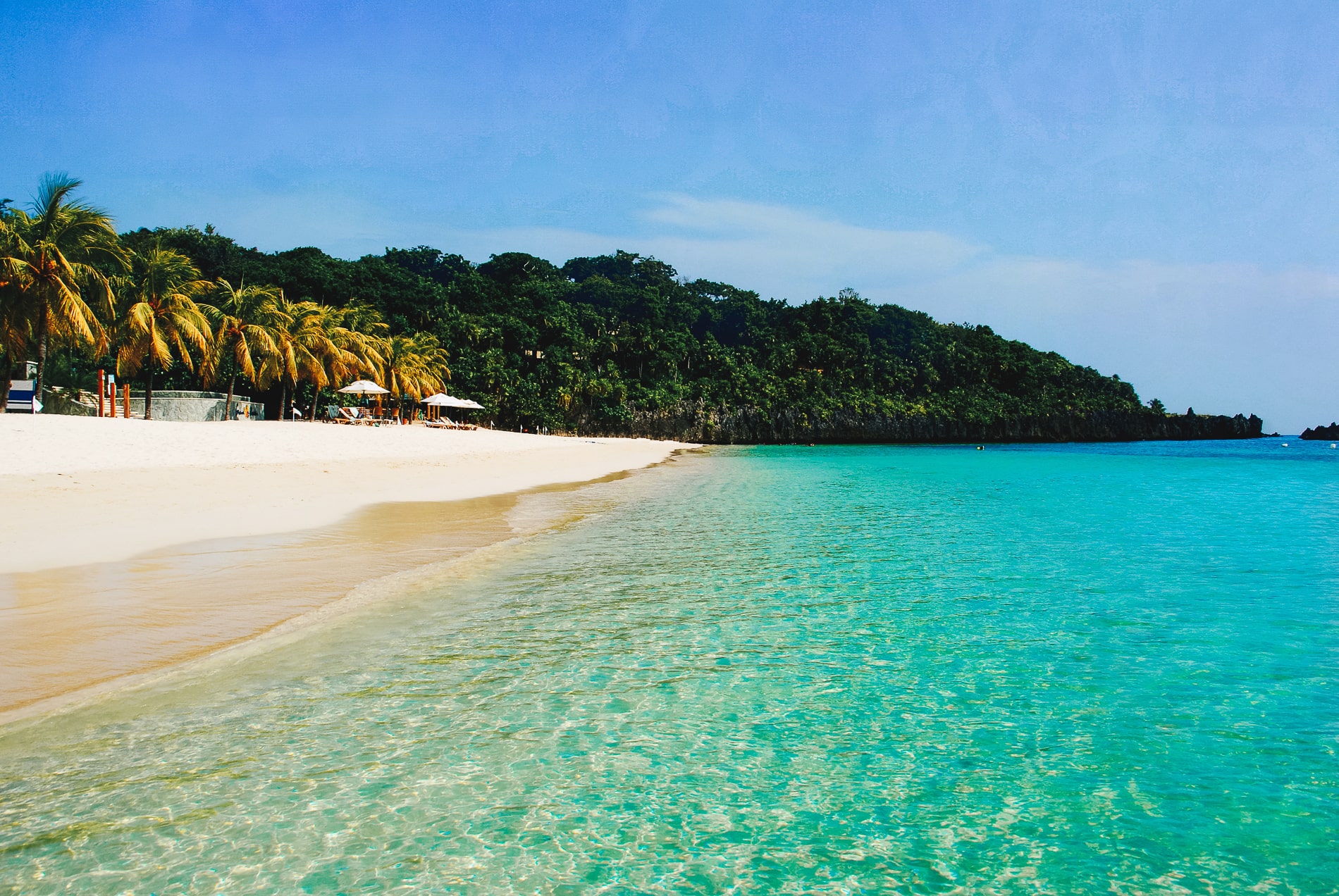
- Best time to dive in Honduras
Diving in Honduras is really great, and you can also enjoy snorkeling. The weather is pleasant all year round, but it’s best to avoid the rainy months between October and January. August is apparently the hottest month, with an average temperature of 29°.The weather is pleasant all year round, but it’s best to avoid the rainy months between October and January. The water temperature varies between 27 and 28°C.
Honduras is very rarely hit by Caribbean cyclones (July to September), but the last one was devastating.
For whale shark watching, choose the months of April to June.
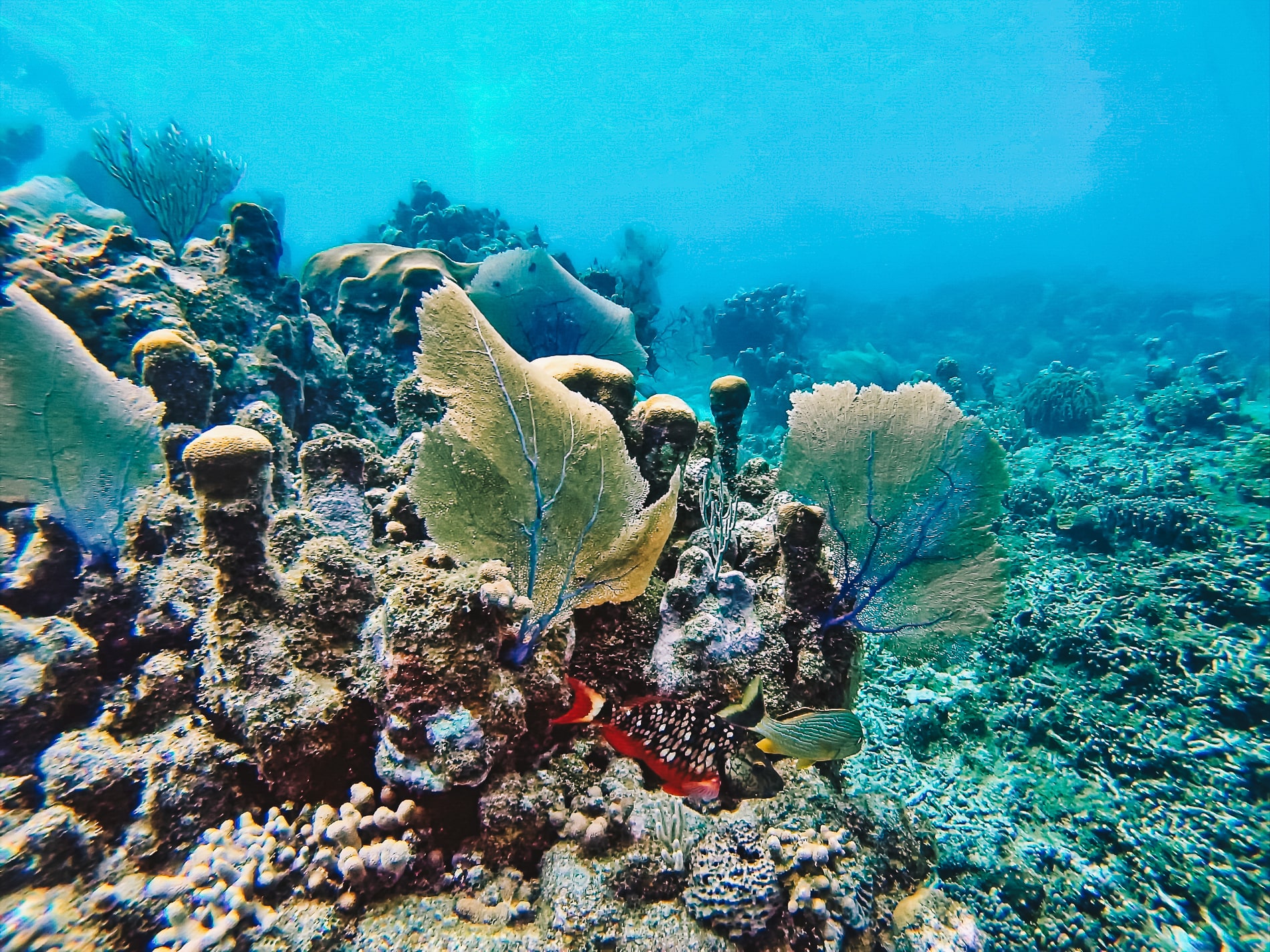
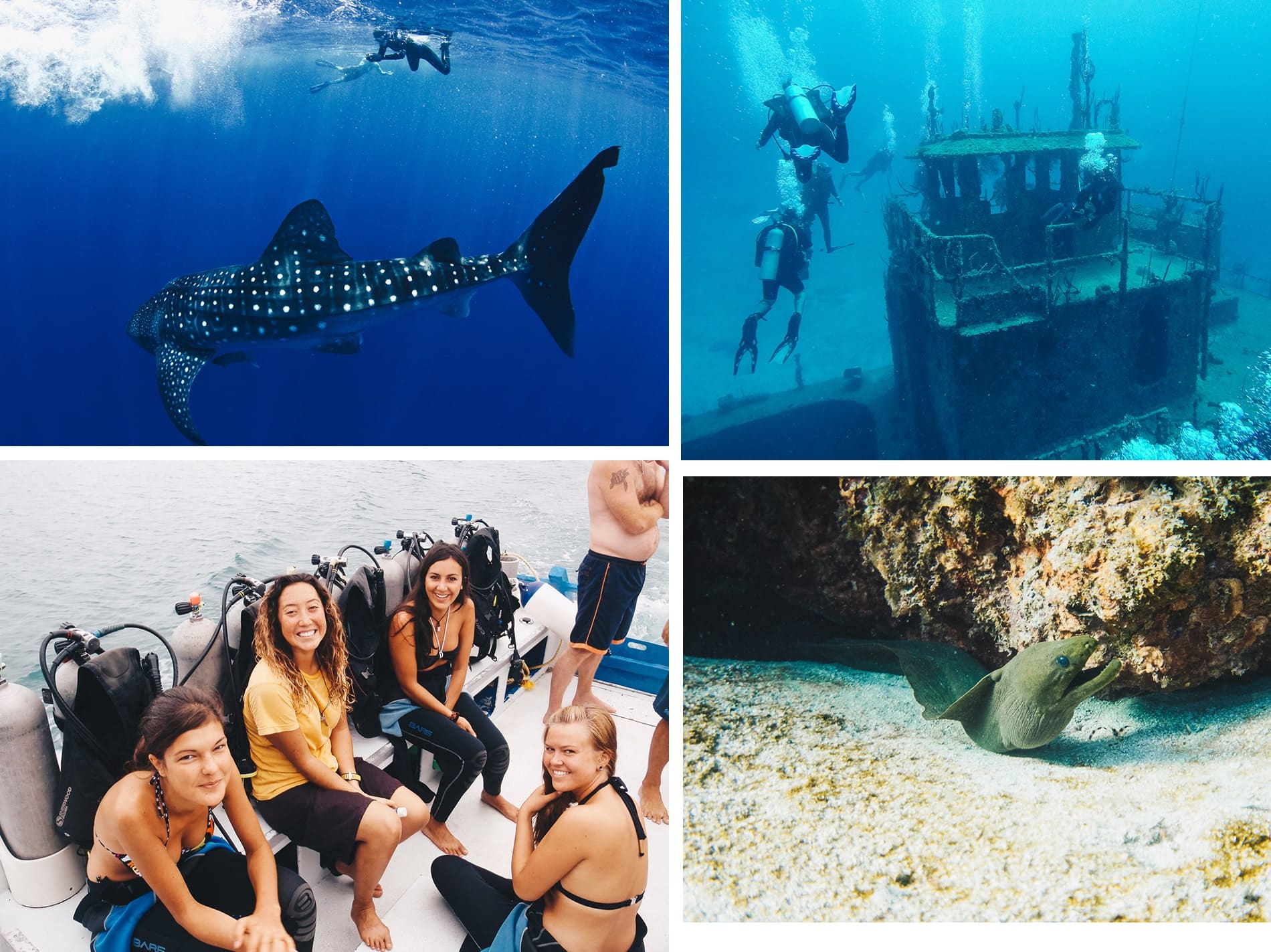
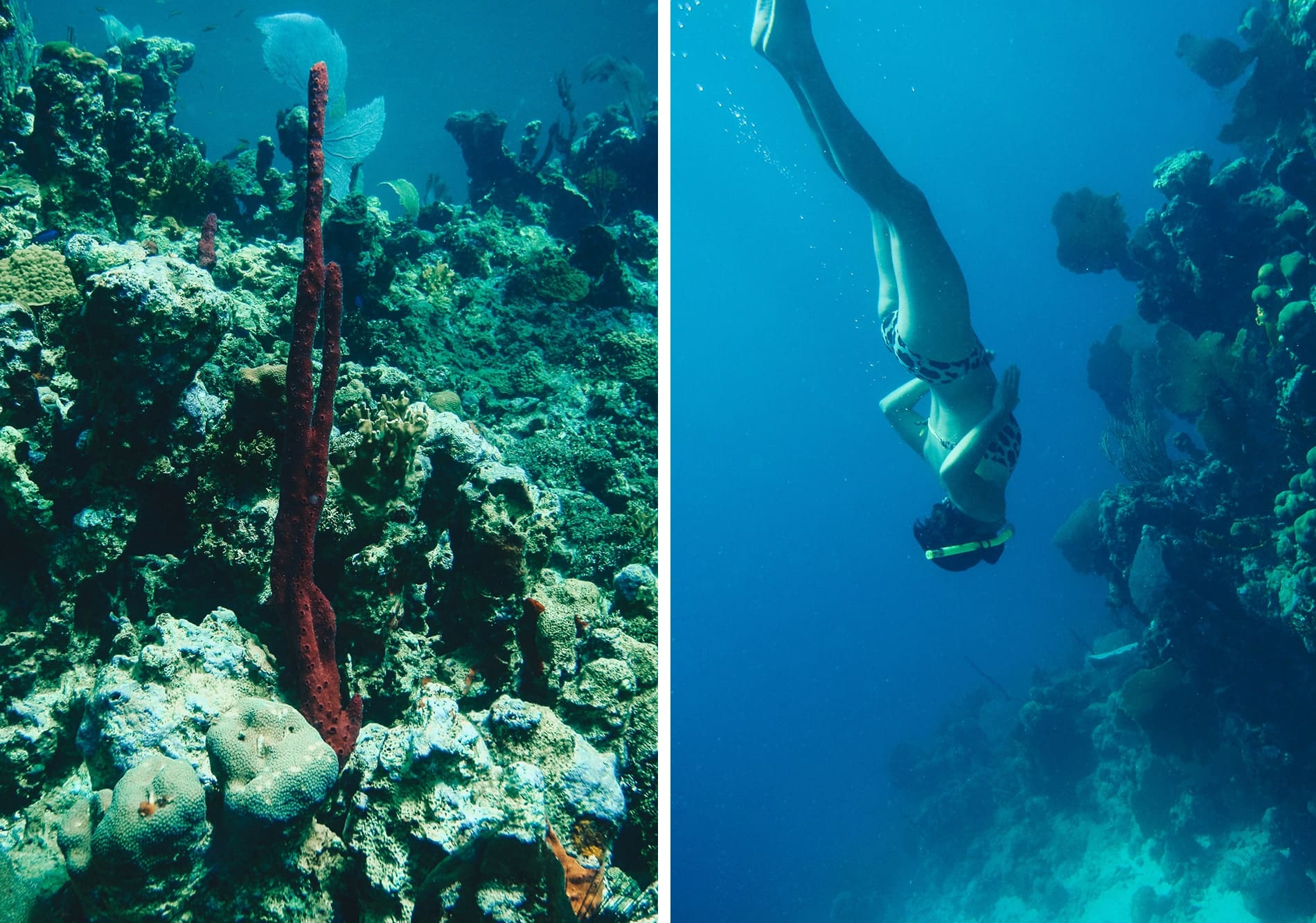
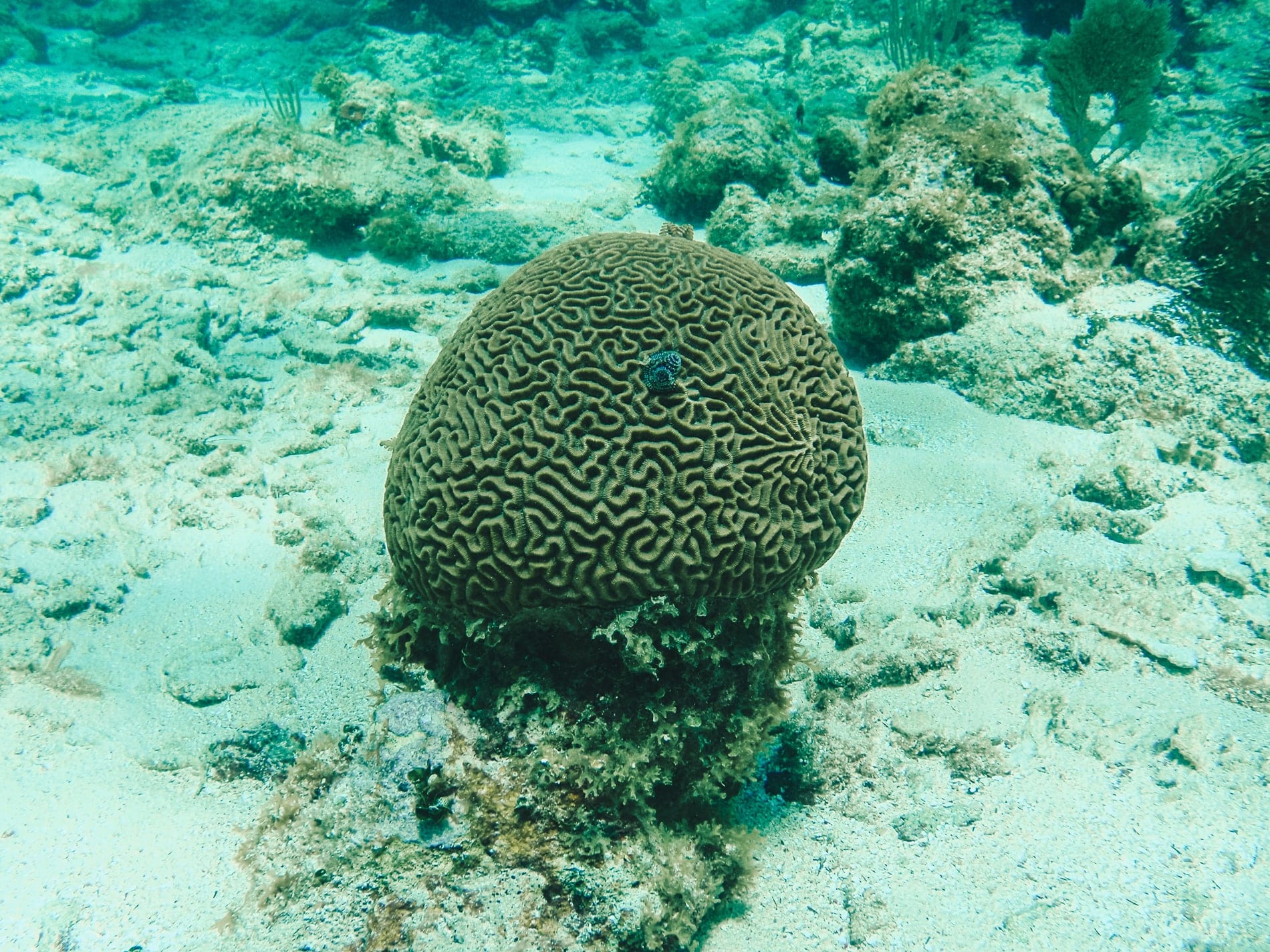
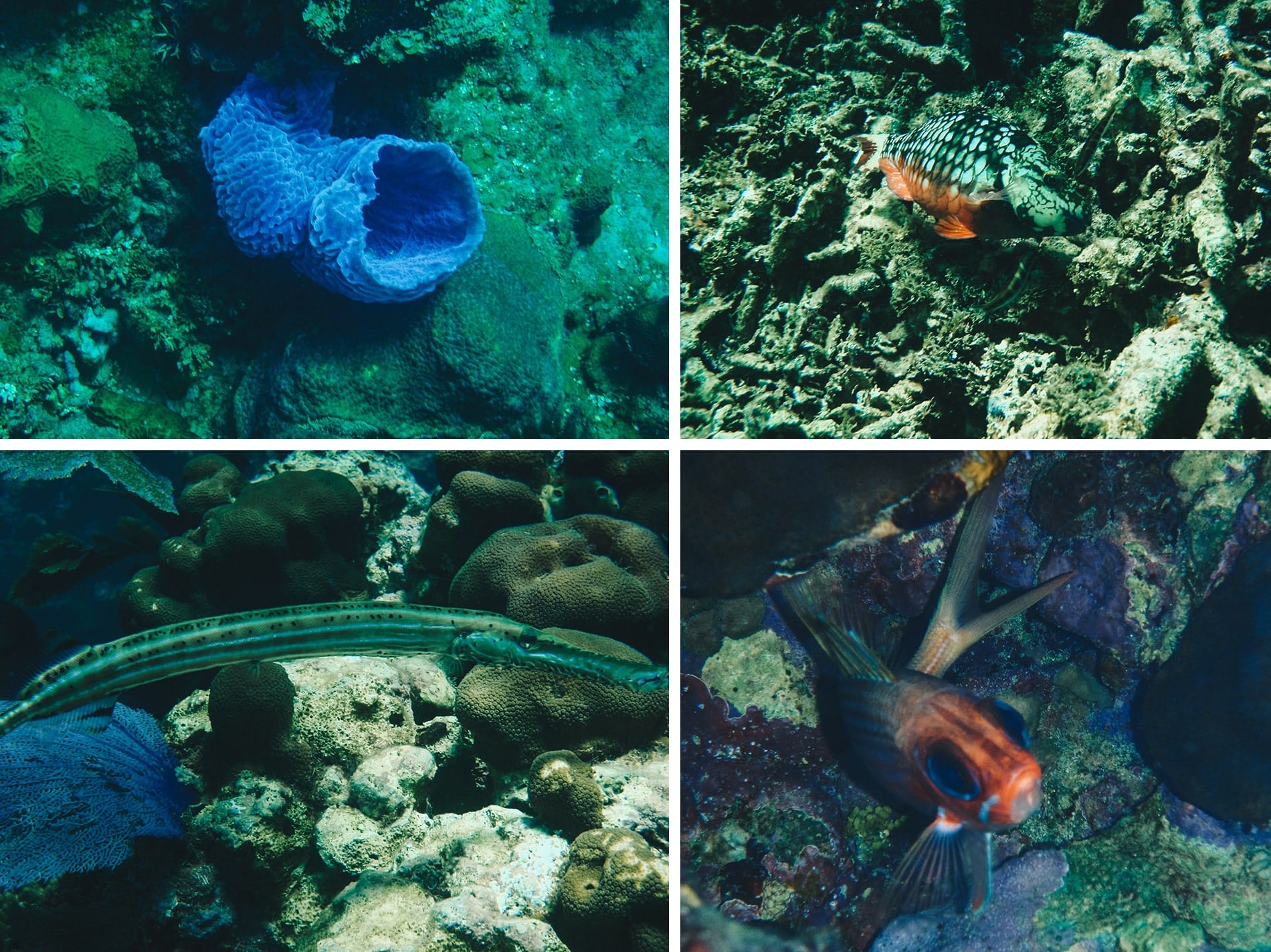
- Local specialities to try
- The famous “baleadas “: a kind of local tortilla filled with black beans and cheese that costs next to nothing.
- Machuca: a kind of stew made with mashed plantains and fish in coconut milk, served in Punta Gorda.
- Tamales: corn dough stuffed and steamed in corn or banana leaves.
- Pastelitos: small fried turnovers, filled with meat or cheese, or a mixture of both.
- Sopa marinera: a seafood soup
- La sopa of caracol: conch soup
- The Monkey La la: a kind of alcoholic milkshake, not too sweet but worth a try
- Salva Vida, Imperial, Baleada and Port Royal: local beers not to be missed
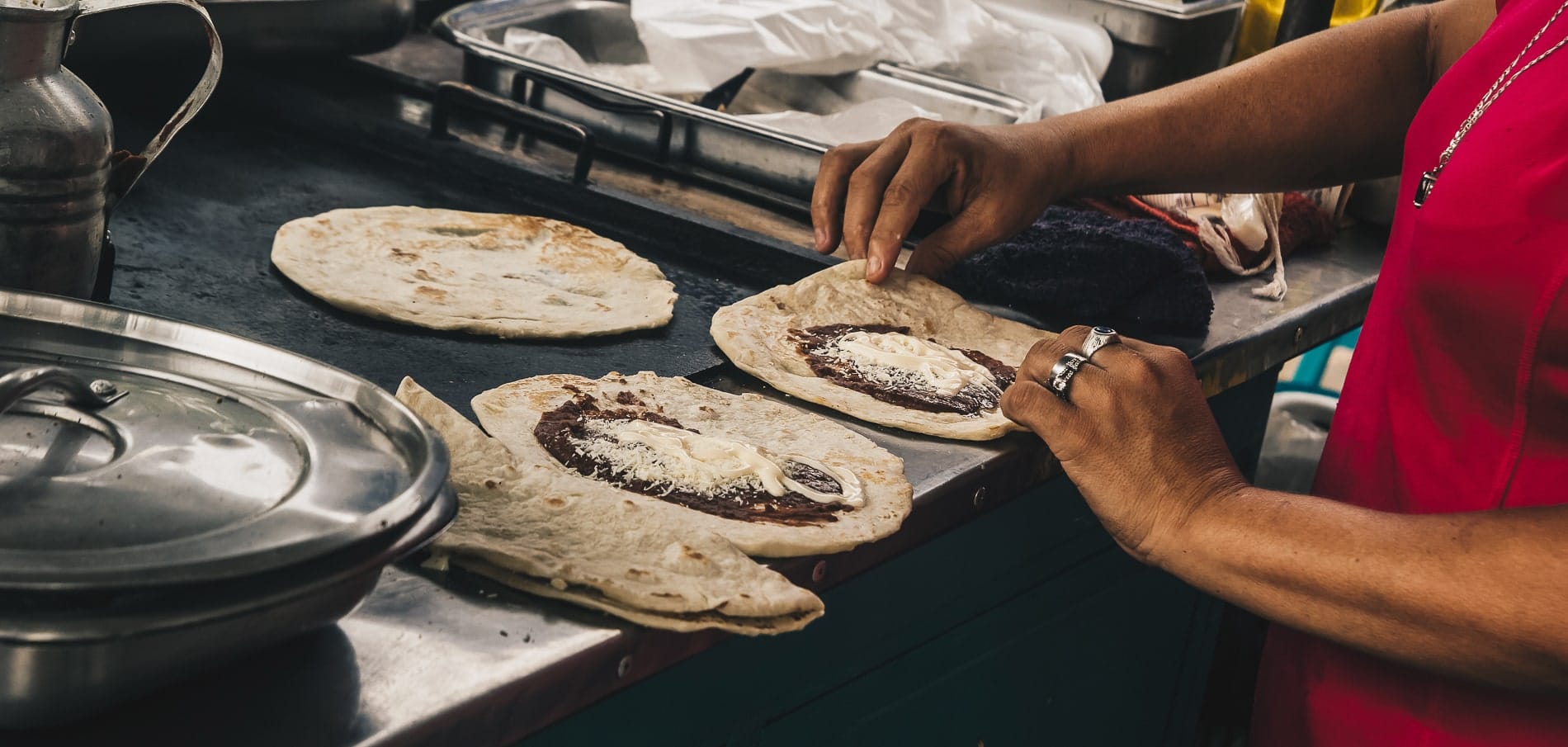
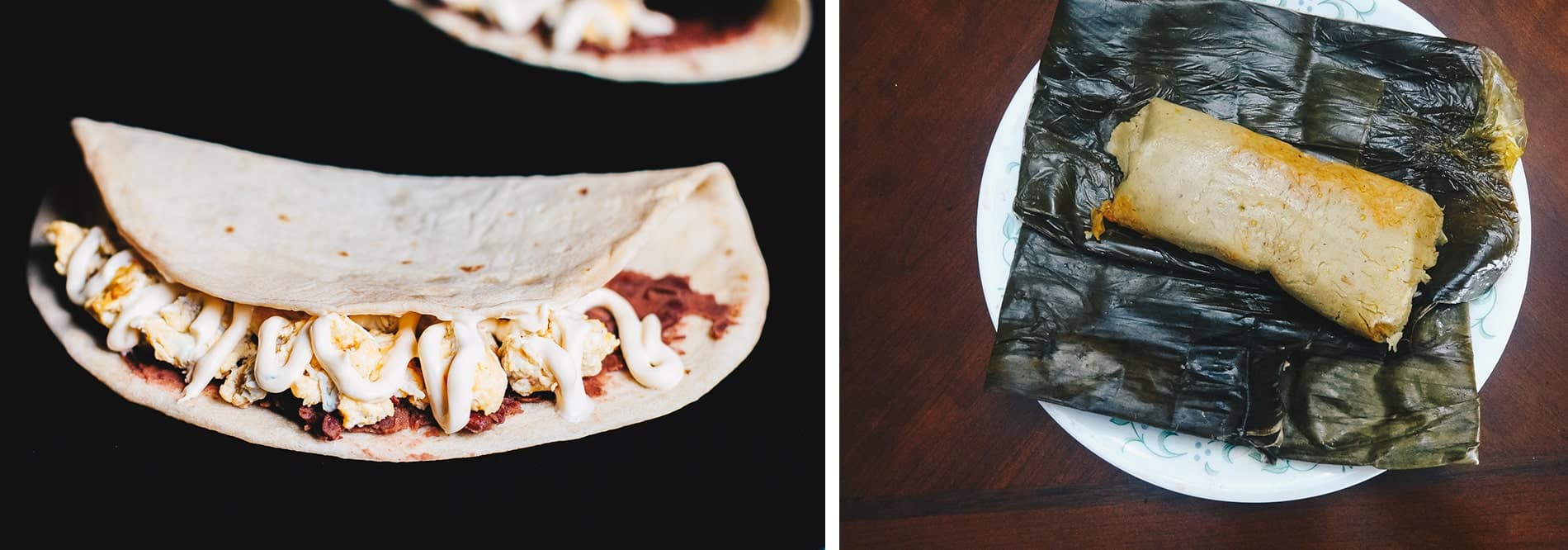
Honduras is a small, original country, ideal for nature lovers because of its diversity, with something for everyone. It can be combined with Belize, in Guatemala or Salvador and will truly surprise you. But above all, come to Honduras for its endearing people, ready to share their daily lives with travelers. Honduras is not yet popular with tourists. So much the better, let’s make the most of it!
Please note that as an accredited bespoke travel designer, I offer to accompany you in the creation of your tailor-made trip to Honduras and create a personalized itinerary tailored to your desires. Please send me an email at : contact@mademoiselle-voyage.fr
